- BOAT OF THE YEAR
- Newsletters
- Sailboat Reviews
- Boating Safety
- Sailing Totem
- Charter Resources
- Destinations
- Galley Recipes
- Living Aboard
- Sails and Rigging
- Maintenance


Hydrofoils for Sailboats
- By By Steven Callahan
- Updated: July 29, 2020
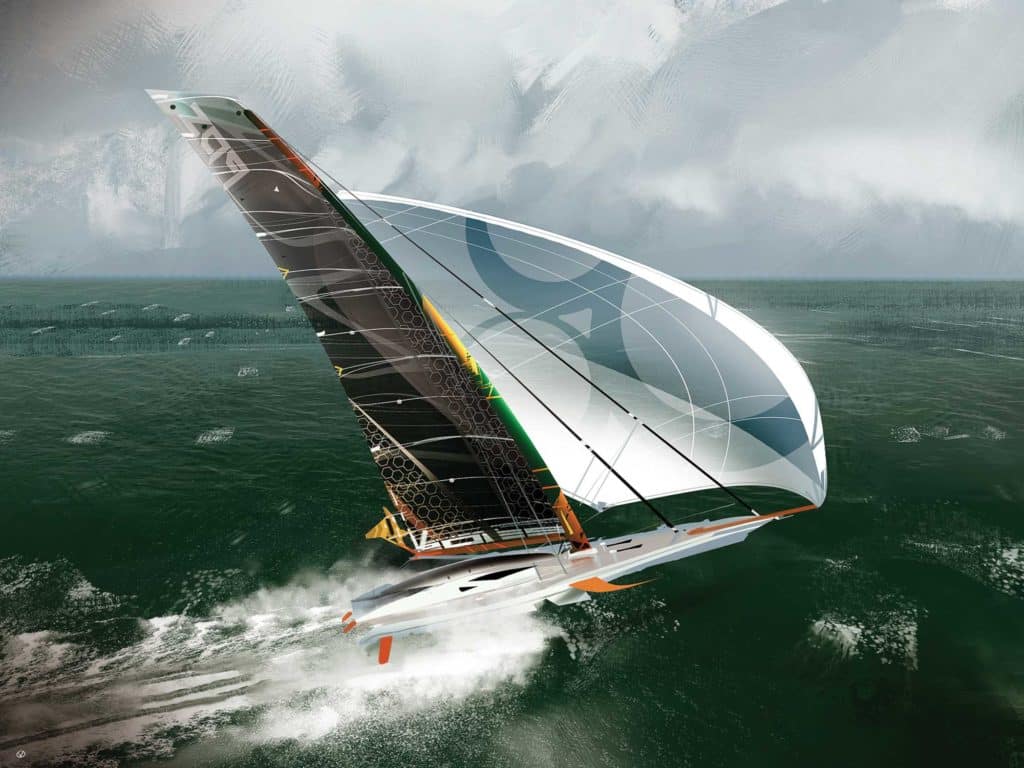
Hydrofoils have been providing dynamic lift since fish sprouted fins. And people have been employing foils ever since they first put paddle to water, and certainly since adding keels and rudders to boats. But the modern, flying America’s Cup boats, kiteboards, Moth dinghies, shorthanded offshore thoroughbreds—these are all playing in a new world in which the terms “hydrofoils” or “lifting foils” describe those oriented to raise a hull or hulls from the water. In these racing realms, if you ain’t got foils, you ain’t got nothin’.
Lifting foils that allow these boats to sometimes home in on three times the wind speed might appear to be of little interest to cruising sailors, but with such common cruising features as self-steering and autopilots, self-tailing winches, rope clutches, fin keels and faster hull shapes all having been passed down from the racing scene, one must ask, “What promise, if any, do hydrofoils hold?”
Lifted or partially lifted boat patents extend back to 1869, but workable watercraft took roots along with early flight. Italian Enrico Forlanini began experimenting with foils in 1898. In 1906, his 1-ton 60 hp foiler reached 42.5 mph. Alexander Graham Bell’s HD-4 Hydrodrome flew on Bras d’ Or Lake at 70 mph in 1919. And several sailing foiler patents began appearing in the 1950s. Notably, JG Baker’s 26-foot monohull, Monitor, flew at 30-plus mph in 1955. Baker experimented with a number of foil configurations, and at least built, if not used, the first wing mast. The first offshore foiler was likely David Keiper’s flying trimaran, Williwaw , in which he crisscrossed the Pacific in the 1960s.
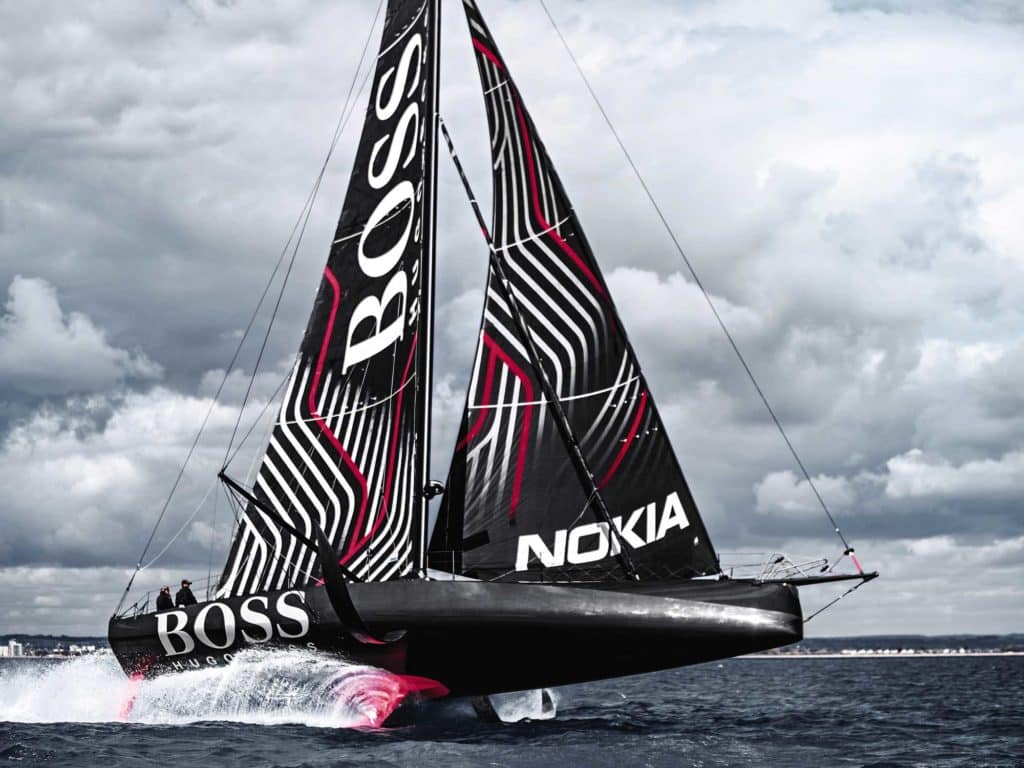
By the 1980s, numerous speed-trial and foil-enhanced offshore-racing multihulls showed huge promise, and have since evolved into behemoth trimarans clocking 30 to 40 knots continuously for long periods, not to mention the monohulls in the Vendée Globe (and soon the Ocean Race) that are capable of speeds exceeding 30 knots. But as boat designer Rodger Martin once reminded me, “If you want a new idea, look in an old book.” He was right. The fully foiling monohulls that will compete in the 2021 America’s Cup will bring things back full circle to the foiling monohull Monitor .
Fluid Dynamics Primer
Any foil—a wing, sail, keel, rudder or lifting foil—redirects the flow of fluid (air included), creating high- and low-pressure areas on opposite sides of the appendage, while developing lift perpendicular to the foil’s surface.
Advancements in foiling science is due in part to the hundreds of foil shapes that were tested, with tabulated results, by the National Advisory Committee for Aeronautics, the forerunner of the National Aeronautics and Space Administration. For the better part of a century now, aircraft and boat designers have been able to choose from a spectrum of refined foil sections that produce predictable amounts of lift and drag for known speeds of fluid and angles of attack, or the angle at which the foil passes through the fluid. Sections of efficient faster foils, as seen on jets or as we flatten our sails to go upwind or reach high speeds, have smaller nose radii and are thinner, with the thickest section of the foils farther aft, up to nearly halfway toward the trailing edge.
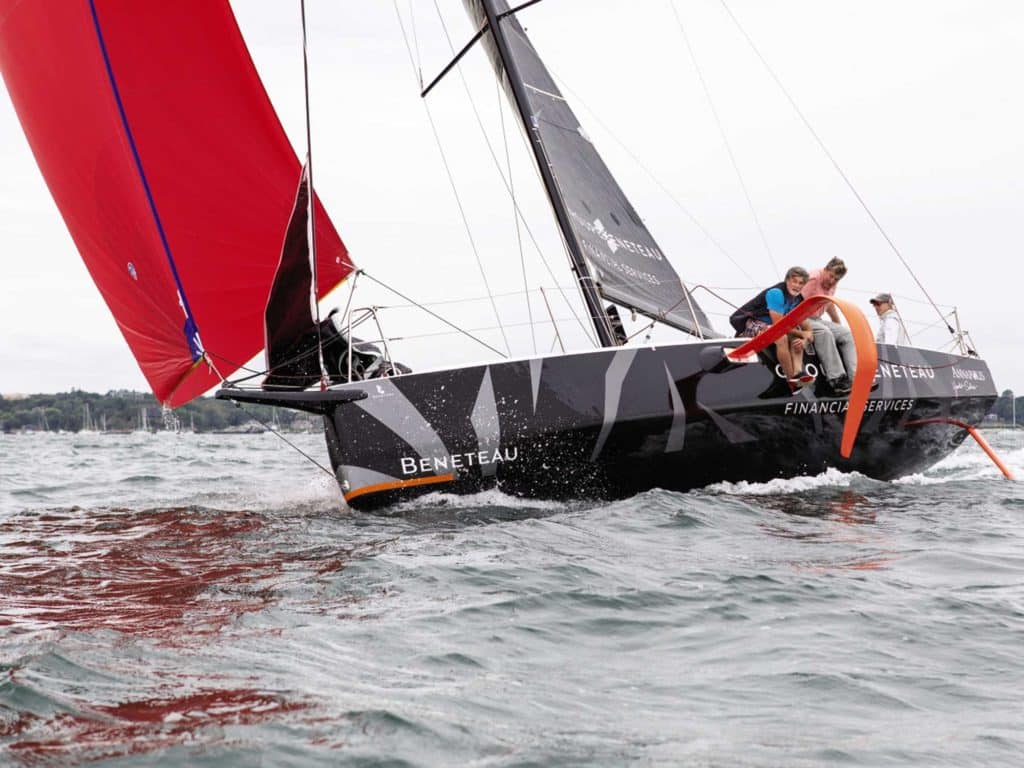
The most efficient foil sections at slow speeds are fatter, with the maximum thickness farther forward, and with larger nose radii, than faster foils. The angle to fluid flow or angle of attack also is greater. We see these slower foils on wings of prop planes and sails when off the wind or in light conditions.
Most sailors are familiar with traditional foils on boats, the teardrop sections of keels that produce lift to weather, reducing leeway, and of rudders, allowing them to steer. Even a flat plate can be a foil, but these tend to be inefficient. Such a shape is prone to fluid separation from the surface, meaning they stall easily, and they maintain poor lift-to-drag ratios. Even keels and rudders are somewhat lift-compromised because they are symmetrical and have to work with fluid coming from either side, whereas lifting foils are more like aircraft wings or propellers, with asymmetrical sections honed for performance in a more stable, fluid flow.
The point is, any foil can be employed at various angles to the surface to prevent leeway, produce increased stability, or help lift the boat out of the water. But those not required to work with fluid flowing from opposite sides can then be honed to maximize lift and minimize drag. Asymmetrical foils were used on boats like Bruce King’s bilgeboarders, including Hawkeye , back in the 1970s. And, designers, including Olin Stephens, had previously employed trim tabs behind keels to improve keel performance.
Sails, which are heeled airfoils, not only drive the boat forward, but they also produce downforce, actually increasing the dynamic displacement of the boat. To counter this and keep the boat sailing more upright, multihull designer Dick Newick first employed slanted asymmetrical hydrofoils in the outer hulls of his small charter trimaran, Lark , in 1962. A portion of the lift developed by the hydrofoil resisted leeway, while a portion worked to actually lift the leeward hull, keeping the boat more upright and reducing dynamic displacement and drag.
Anyone who has ridden on even a foil-stabilized boat will know how riding at least lightly on the waves, and especially above them, beats smashing through them. When boats lift off, everything gets a lot smoother, drag falls away, and the boat accelerates.
Cruising on Foils
But why would a cruiser want to whip over the sea? Wouldn’t this demand an inordinate amount of attention by the crew? Would lifting foils even be applicable to a boat that must have substantial displacement to carry crew and stores? Aren’t cruising-boat hydrofoils an oxymoron?
Maybe, but I believe our boats’ hulls are likely to sprout fins much as fish have as we orient foils to more efficiently resist leeway, add stability, aid steering, reduce drag, increase comfort, allow for shallower draft, and enhance wider variations in hull shapes.
Boats have gotten increasingly wide through the years to advance form stability, improve performance (primarily off the wind), and boost interior volume. But the downside is that fat boats tend to slam more upwind. What if you could reduce dynamic displacement of the boat and lift that hull even partially from the water? The result would be less slamming, especially upwind.
At the same time, what about narrower boats that are known for being more seakindly, especially when closehauled, but lack form stability to carry adequate sail area for powering upwind, and tend to roll badly downwind? Or shallow-draft vessels that are lovely for cruising, but again, tend to suffer from reduced stability? Foils can give that stability back.
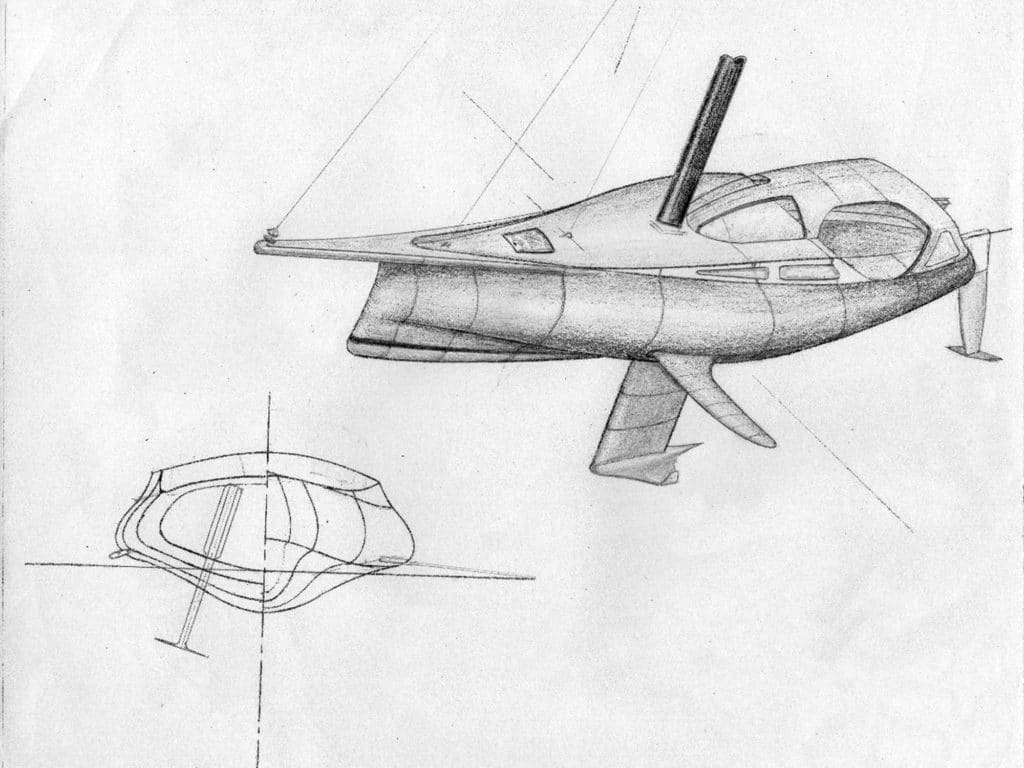
Looking ahead, boat designers might choose to reduce ballast, making up for it with a foil. In short, lifting foils can reduce boat drag and motion while increasing power and performance.
Pitching also does no favors for speed or crew comfort. Foils can come into play here as well. Foils parallel to the sea’s surface resist motion up and down, and a lifted boat skating above chop also is less prone to hobby-horsing through waves. Multihulls have always been particularly susceptible to pitching for a number of reasons, but watching videos of multihulls sailing to weather show an obvious huge advantage that foilers have compared with nonfoilers. Offshore multihulls now routinely employ T-foils on the rudders to control the fore and aft angles of the boat (attitude), a feature easily adaptable to any vessel.
OK, so what’s the cost? Obviously, the more things sticking through the hull, especially if they are retractable, the more it’s going to impact the interior. There would be added weight, complexity and cost. Foils also create noise, and there’s susceptibility to damage from hitting stuff. And let’s not forget compromises with shapes, purposes and things not yet imagined.
As for damage, it’s possible to fold the foils back into the hull. Think swinging center- boards or actual fish fins. Daggerboardlike foils can at least employ shock-absorbing systems similar to the daggerboard arrangements found in many multihulls. This includes weak links that are outside the hull, so if a foil is struck, it frees the foil to fold back or to come off before being destroyed or damaging the hull. Or, foils might hang from the deck rather than penetrating the hull, allowing them to kick up (and to be retrofitted to existing boats). These configurations also relieve the interior of intrusions, and keep the noise more removed from it. I have no doubt that numerous talented designers will be exploring all kinds of options and compromises in coming years, finding ways to make foils both practical and more than worth the compromises.
Sailing more upright, shallower draft, speed, comfort—what’s not to like? Just what is possible? I have a feeling the cruising community is about to find out.
Steven Callahan is a multihull aficionado, boat designer and the author of Adrift , an account of his 76 days spent in a life raft across the Atlantic.
- More: foils , How To , hydrofoils , print june july 2020 , sailboat design
- More How To
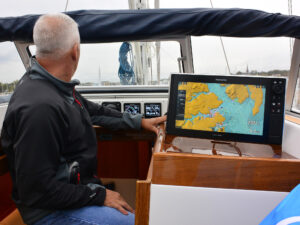
Adding Onboard Electronics? Here’s How To Get Started
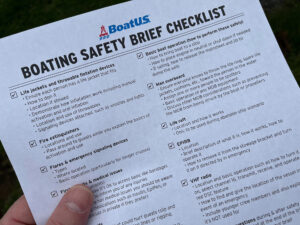
7 Boating Safety Tips for Summer Cruising
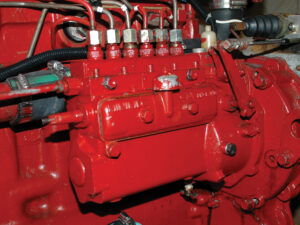
How to Prep for a Diesel You Can Depend On
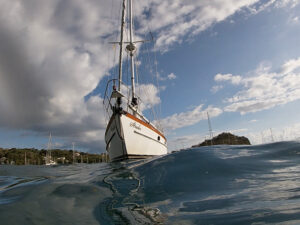
Anchoring in Paradise
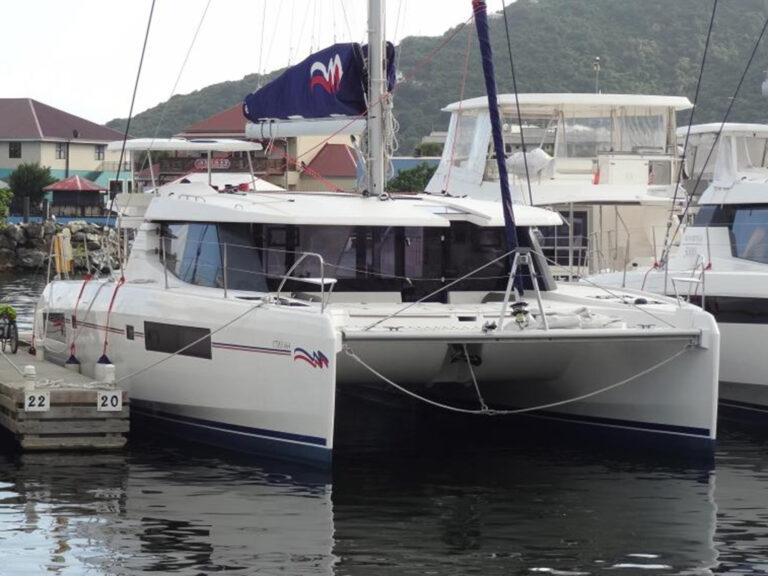
Now For Sale: Leopard 45

The Long Way Around

Sailing to the Land of Shrimp

Swallow Tattoos and Sailors
- Digital Edition
- Customer Service
- Privacy Policy
- Email Newsletters
- Cruising World
- Sailing World
- Salt Water Sportsman
- Sport Fishing
- Wakeboarding
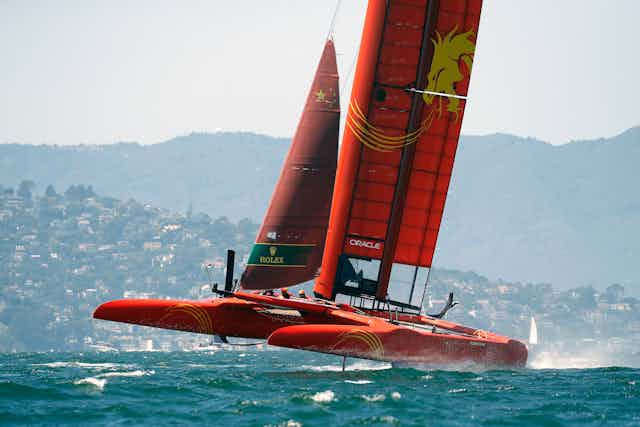
Sail GP: how do supercharged racing yachts go so fast? An engineer explains
Head of Engineering, Warsash School of Maritime Science and Engineering, Solent University
Disclosure statement
Jonathan Ridley does not work for, consult, own shares in or receive funding from any company or organisation that would benefit from this article, and has disclosed no relevant affiliations beyond their academic appointment.
View all partners
Sailing used to be considered as a rather sedate pastime. But in the past few years, the world of yacht racing has been revolutionised by the arrival of hydrofoil-supported catamarans, known as “foilers”. These vessels, more akin to high-performance aircraft than yachts, combine the laws of aerodynamics and hydrodynamics to create vessels capable of speeds of up to 50 knots, which is far faster than the wind propelling them.
An F50 catamaran preparing for the Sail GP series recently even broke this barrier, reaching an incredible speed of 50.22 knots (57.8mph) purely powered by the wind. This was achieved in a wind of just 19.3 knots (22.2mph). F50s are 15-metre-long, 8.8-metre-wide hydrofoil catamarans propelled by rigid sails and capable of such astounding speeds that Sail GP has been called the “ Formula One of sailing ”. How are these yachts able to go so fast? The answer lies in some simple fluid dynamics.
As a vessel’s hull moves through the water, there are two primary physical mechanisms that create drag and slow the vessel down. To build a faster boat you have to find ways to overcome the drag force.
The first mechanism is friction. As the water flows past the hull, a microscopic layer of water is effectively attached to the hull and is pulled along with the yacht. A second layer of water then attaches to the first layer, and the sliding or shearing between them creates friction.
On the outside of this is a third layer, which slides over the inner layers creating more friction, and so on. Together, these layers are known as the boundary layer – and it’s the shearing of the boundary layer’s molecules against each other that creates frictional drag.
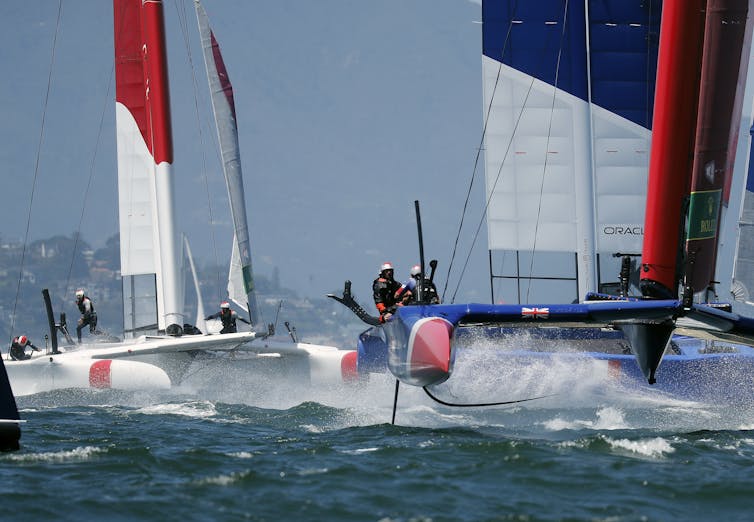
A yacht also makes waves as it pushes the water around and under the hull from the bow (front) to the stern (back) of the boat. The waves form two distinctive patterns around the yacht (one at each end), known as Kelvin Wave patterns.
These waves, which move at the same speed as the yacht, are very energetic. This creates drag on the boat known as the wave-making drag, which is responsible for around 90% of the total drag. As the yacht accelerates to faster speeds (close to the “hull speed”, explained later), these waves get higher and longer.
These two effects combine to produce a phenomenon known as “ hull speed ”, which is the fastest the boat can travel – and in conventional single-hull yachts it is very slow. A single-hull yacht of the same size as the F50 has a hull speed of around 12 mph.
However, it’s possible to reduce both the frictional and wave-making drag and overcome this hull-speed limit by building a yacht with hydrofoils . Hydrofoils are small, underwater wings. These act in the same way as an aircraft wing, creating a lift force which acts against gravity, lifting our yacht upwards so that the hull is clear of the water.

While an aircraft’s wings are very large, the high density of water compared to air means that we only need very small hydrofoils to produce a lot of the important lift force. A hydrofoil just the size of three A3 sheets of paper, when moving at just 10 mph, can produce enough lift to pick up a large person.
This significantly reduces the surface area and the volume of the boat that is underwater, which cuts the frictional drag and the wave-making drag, respectively. The combined effect is a reduction in the overall drag to a fraction of its original amount, so that the yacht is capable of sailing much faster than it could without hydrofoils.
The other innovation that helps boost the speed of racing yachts is the use of rigid sails . The power available from traditional sails to drive the boat forward is relatively small, limited by the fact that the sail’s forces have to act in equilibrium with a range of other forces, and that fabric sails do not make an ideal shape for creating power. Rigid sails, which are very similar in design to an aircraft wing, form a much more efficient shape than traditional sails, effectively giving the yacht a larger engine and more power.
As the yacht accelerates from the driving force of these sails, it experiences what is known as “ apparent wind ”. Imagine a completely calm day, with no wind. As you walk, you experience a breeze in your face at the same speed that you are walking. If there was a wind blowing too, you would feel a mixture of the real (or “true” wind) and the breeze you have generated.
The two together form the apparent wind, which can be faster than the true wind. If there is enough true wind combined with this apparent wind, then significant force and power can be generated from the sail to propel the yacht, so it can easily sail faster than the wind speed itself.
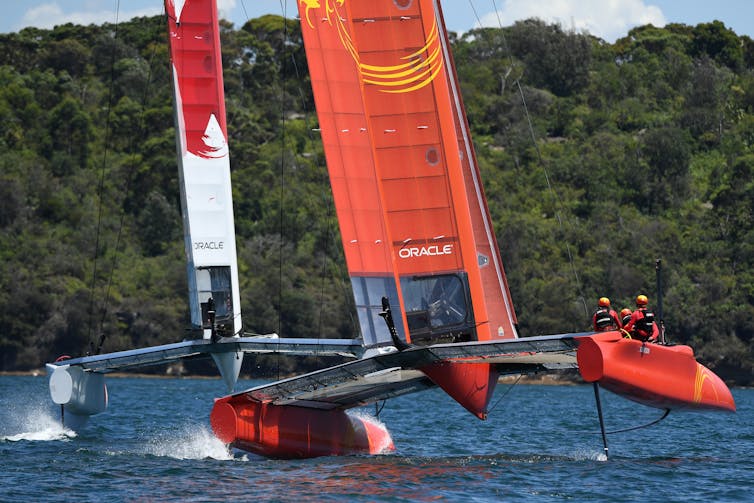
The combined effect of reducing the drag and increasing the driving power results in a yacht that is far faster than those of even a few years ago. But all of this would not be possible without one further advance: materials. In order to be able to “fly”, the yacht must have a low mass, and the hydrofoil itself must be very strong. To achieve the required mass, strength and rigidity using traditional boat-building materials such as wood or aluminium would be very difficult.
This is where modern advanced composite materials such as carbon fibre come in. Production techniques optimising weight, rigidity and strength allow the production of structures that are strong and light enough to produce incredible yachts like the F50.
The engineers who design these high-performance boats (known as naval architects ) are always looking to use new materials and science to get an optimum design. In theory, the F50 should be able to go even faster.
- Engineering
- Aerodynamics

Case Management Specialist

Lecturer / Senior Lecturer - Marketing

Assistant Editor - 1 year cadetship

Executive Dean, Faculty of Health

Lecturer/Senior Lecturer, Earth System Science (School of Science)
MAIN FUNCTIONAL REQUIREMENT: Lift the boat’s hull outside the water.
DESIGN PARAMETER: Hydrofoil (It is a foil or wing under water used to lift the boat’s hull until it is totally outside the water.)
GEOMETRY/STRUCTURE:
EXPLANATION OF HOW IT WORKS/ IS USED:
1. At low speeds the hull (body of ship) sits in the water and the hydrofoils are totally submerged in the water.
2. As the boat’s speed increases, the hydrofoils create lift.
3. At a certain speed, the lift produced by the hydrofoils equals the sum of of the boat and cargo weights. Therefore the hull comes out of the water.
4. Instead of having an increase in drag with increasing speed because the hull is lifted out of the water (contrary to what happens in traditional boats due to pressure drag), the hydrofoils provide a more efficient way of cruising. Decreasing the drag contributes to the better use of the power needed for the movement of the boat.
DOMINANT PHYSICS:
How is the lift produced - Fluid Dynamics.
For the purpose of this project two explanations will be presented in a general and basic way. These theories are the application of Bernoulli’s Equation and Euler’s Equation for Streamline Curvature Effect.
Bernoulli’s Equation: Po = P 1 + � r v 1 � + r gy 1 = P 2 + � r v 2 � + r gy 2
This equation applies to flows along a stream line which can be modeled as : inviscid, incompressible, steady, irrotational and for which the body forces are conservative. Also the difference on the height of the foil (the distance from the bottom section to the upper one) is small enough so that the difference r gy 2 - r gy 1 is negligible compared to the difference of the rest of the terms. What is left is that the pressure plus one half the density times the velocity squared equals a constant (the stagnation pressure) . As the speed along these streamlines increases ,the pressure drops (this will become important shortly) . The fluid that moves over the upper surface of the foil moves faster than the fluid on the bottom. This is due in part to visous effects which lead to formation of vertices at the end of the foil . In order to conserve angular momentum caused by the counter-clockwise rotation of the vortices, there has to be an equal but opposite momentum exchange to the vortex at the trailing edge of the foil. This leads to circulation of the fluid around the foil. The vector summation of the velocities results on a higher speed on the top surface and a lower speed on the bottom surface. Applying this to Bernoulli’s it is observed that, as the foil cuts through fluid, the change in velocity produces the pressure drop needed for the lift. As it is presented in the diagram, the resulting or net force (force= (pressure)(area)) is upward.
This explanation can be enriched with the Principle of Conservation of Momentum. (Momentum = (mass)(velocity)) If the velocity of a particle with an initial momentum is increased, then there is a reactant momentum equal in magnitude and opposite in direction to the difference of the momentums. (See diagram). (Mi = Mf + D M) Euler’s Equation: d(p+ r gy)/dn = r v�/R
Here again, the term referring to the height is assumed negligible compared to the other terms in the equation. This equation says that as you go further from the center of the radius of curvature of a streamline, the pressure on the streamlines increases. The upper surface of the foil is closer to the center of curvature of the streamlines , therefore there will be a lower pressure than the ambient pressure above the foil. The difference between the pressure on the top surface and the ambient pressure at the bottom surface will produce a net pressure that will cause the lift.(See diagram.)
Angle of Attack:
As it has been presented, lift comes from the dynamics of the fluid in the area surrounding the foil. But the lift can be optimized by positioning the hydrofoil at an angle (relative to the incoming fluid flow) called the angle of attack (See diagram). The goal is to optimize the lift to drag ratio. This ratio depends on the shape of the foil, which in this case is considered to be a thin foil. With a small angle of attack, the lift increases rapidly while the drag increases at a small rate. After an angle of ~ 10� the lift increases slowly until ~ 15� where it reaches a maximum. After ~15� stall can set in. When the angle of attack is 3� to 4� the ratio of lift:drag is at it’s maximum. So the foil is more efficient at those angles (3�and 4�) with lift to drag ratios of ~ 20 to 25:1
LIMITING PHYSICS:
At first, people can think that stalling is likely to be a problem in hydrofoils as it is in airfoils, but surprisingly it is not. A steep angle of attack is not needed in the design of the hydrofoil. On the contrary, small angles of attack are used on hydrofoils to optimize the lift to drag ratio as explained before.
What is a primary concern is the design of the foil, the struts/supports, and their positioning. All these features have to be taken in consideration. So the features are designed to produce a minimum speed that will lift the boat of certain weight and keep it foilborne.
One problem that a hydrofoil craft can experience is the height of the waves being greater than the struts. Also, if the craft is traveling faster than the waves, the foils could break to the surface and outside of the water, resulting in a loss of lift and a negative angle of attack when the foil dives into the next wave, making the craft crash into the sea. Engineers have designed hydrofoils to minimize these limitations and better the ship’s performance.
PLOTS/GRAPHS/TABLES:
None Submitted
SOME HYDROFOILS AND THEIR USE:
Hydrofoils have become very popular. They are used in various kind of sea traveling, from military use to watersports. The high speed, smooth cruise and better turns delivered by hydrofoils have been used in military ships. Sailing has also adopted the hydrofoils to gain more speed. They enable new inventions that can satisfy people’s desire to challenge danger , like the sky ski. It is a water ski with a hydrofoil attached which permits people to fly above the water surface. Every day more hydrofoils are used, and in the future, they may be the dominate method of sea traveling.
REFERENCES/MORE INFORMATION:
See also on this site: Airfoil , Sailboats
Alexander, Alan, James Grogono, and Donald Nigg; Hydrofoil Sailing . Juanita Kalerghi: London, 1972.
Bertin, John and Michael Smith; Aerodynamics for Engineers, Third Ediotion . Prentice Hall: New Jersey, 1998.
Hook, Cristopher and A.C. Kermode; Hydrofoils . Pitman Paperbags: London, 1967.
The International Hydrofoil Society’s Web Page: http://www.erols.com/foiler/index.html

Discover the Magic of Hydrofoil Sailboats

Last Updated by
Daniel Wade
December 11, 2023
Key Takeaways
- Hydrofoil sailboats blend speed, stability, and innovation for a fun sailing experience.
- Their design lifts the hull above water, reducing drag and enabling high-speed travel.
- Advanced control mechanisms maintain stability in varying wind conditions.
- Sails and hulls are meticulously engineered for optimal aerodynamics and lift.
- Ongoing innovations in foil technology continue to propel hydrofoils to new heights.
Based on their innovation and nature, the world of hydrofoil sailboats are magical, to say the least. But what exactly makes them so exceptional?
The magic of hydrofoil sailboats lies in their extraordinary speed. They can achieve remarkable speeds that were once thought impossible for sailboats. Their unrivaled stability and cutting-edge technology redefine sailing, offering a thrilling blend of innovation and performance.
Over the years, I've dedicated myself to mastering the intricacies of the yachting world, not just as an observer but as an active participant in the hydrofoil sailing community. My knowledge extends beyond the surface, encompassing the technical aspects of hydrofoil design and the thrill of high-speed sailing. As such, I’ll provide a comprehensive and engaging exploration of what sets hydrofoil sailboats apart, making them truly magical on the waters.
Table of contents
Discover the Magic of Hydrofoil Sailboats
Hydrofoils saw their early development as a concept for enhancing speed and efficiency on the water. From Alexander Graham Bell's experiments to the application of foils on sailboats in the 1950s, the quest has always been for greater speed.
But it wasn't until Russell Long championed these designs with the CEC foiling catamaran and the development of the Hobie Trifoiler that hydrofoils began to carve a distinct niche in the sailing world.
This sailboat operates on a simple yet ingenious principle: as the speed increases, the foils submerged beneath the boat generate lift. This lift thrusts the boat's hull above the water, dramatically reducing drag.
It’s similar to how air flows around the wing of an airplane, only with water's denser environment offering a different dynamic. This revolutionary foiling system allows boats to glide over waves, offering an incredibly smooth ride.
The variety of hydrofoil sailboats is astounding, from the foiling catamarans that have revolutionized the America's Cup to the twin sail trimaran designs. The fastest production sailboat, the Hobie Trifoiler , showcases what hydrofoils are capable of.
Additionally, boats like the innovative Emirates Team New Zealand vessels continue to push the boundaries of technology in competitive sailing. Whether for recreational purposes or high-speed racing, the range of hydrofoil sailboats caters to different sailing experiences and preferences.
Now, let’s explore the various aspects of hydrofoil sailboats that make them truly magical.
The Thrills of Hydrofoil Sailing
When I first stepped onto a hydrofoil sailboat, I knew that sailing would never be the same for me. Harnessing the power of the wind to achieve remarkable speeds while hovering above the water was nothing short of revolutionary.
It's an adrenaline-infused blend of sailing, flying, and innovation that promises high performance and stability with a significant reduction in wetted areas.
The allure of hydrofoiling is not just about the speed; it's the sensation of flying over the waves, defying the conventions of traditional sailing. With each gust, my hydrofoil sailboat becomes a silent, swift car, slicing through the air rather than merely sailing on the water.
When sailing with hydrofoils, you get to experience the following benefits.
- High Speed: With hydrofoils, I've seen and achieved speeds I never thought possible on water.
- Less Wetted Area: As the hydrofoils lift the hull out of the water, drag is reduced, further contributing to the craft's efficiency and speed.
- Stability: Surprisingly, the flying sensation is accompanied by stability once airborne, making the ride smoother.
The America’s Cup Competitive Foiling
Over the years, I've witnessed first-hand how hydrofoil technology has radically altered the landscape of competitive sailing. The introduction of hydrofoils has not only redefined what we consider possible in the sail area but has also brought a fresh surge of excitement to the racing circuit.
The most illustrious event in sailing, the America's Cup , underwent a transformation with the embrace of hydrofoils. Emirates Team New Zealand, a frontrunner in hydrofoil innovation, redefined the America's Cup racing in 2017.
Alongside them, the US team and Luna Rossa played pivotal roles in reshaping the landscape of America's Cup racing.
With their AC50 class catamarans soaring above the waves at top speeds that defy traditional sailing limits, they clinched the title and shifted the focus of competitive racing toward technological prowess.
The spectacle of these vessels racing is not just about the crew's capabilities but equally a testament to engineering marvels.
Also, the advent of hydrofoils in racing has certainly led to a spike in performance metrics. Here's a concise table highlighting the before and after impact of hydrofoiling in competitive Sailing:
This table illustrates just how much the racing landscape has shifted; it's not only sailing anymore.
It’s similar to piloting a high-speed aircraft, with each crew member playing a crucial role in harnessing the raw power of the strong winds in harmony with state-of-the-art technology. Watch this video for a more detailed explanation of hydrofoil sailboats and their magical power.
Technical Aspects of Hydrofoil Sailboats
In diving into the technical aspects of hydrofoil sailboats, I'll give you an insight into the intricate designs that enable these marvels to glide above the water, as well as the cutting-edge foil technology propelling them.
The design of a hydrofoil sailboat revolves around its capability to elevate the hull above the water, reducing drag and enabling high wind-speed travel. Control mechanisms are central in maintaining stability, especially when the sailboat interacts with varying wind conditions or maneuvers through shallow waters.
The hull's length and overall design are calibrated for balancing aerodynamics with hydrodynamics. In designing sails and hulls for foiling, one must carefully balance the need for power with the propensity for lift.
The sails are tailored not only to harness the wind's energy effectively but also to match the unique mechanics of a vessel in flight. Meticulous engineering ensures that the sail configuration works in harmony with the foils to propel the sailboat forward swiftly.
Additionally, the foil technology, which is pivotal to modern hydrofoils, has undergone significant further development over the years . From the materials used to the manufacturing processes, every element incorporates the latest in technology to yield extreme performance.
Advancements have led to foils that can automatically adjust to sailing conditions and speed, which is instrumental for achieving and maintaining high speeds.
Currently, the future of hydrofoil technology seems bound for even further breakthroughs. Customization and refinement of foils for specific water conditions, such as the challenges posed by shallow water, are ongoing.
Each new iteration builds upon the last, consistently advancing the field and informing the next leap in hydrofoil sailing. This persistent innovation in foil and hull technology is a testament to the potential that lies ahead for hydrofoil sailboats.
Are Hydrofoil Sailboats the Right Options for You?
Hydrofoil sailboats offer a unique and thrilling sailing experience, but whether they are the right option depends on your preferences and goals. These high-performance vessels are known for their exceptional speed and stability, making them ideal for thrill-seekers and competitive sailors.
If you're passionate about cutting-edge technology and want to push the boundaries of traditional sailing, hydrofoil sailboats could be a perfect fit.
However, they may require a learning curve for beginners and are typically more expensive than traditional sailboats.
Consider your skill level, budget, and desire for speed and innovation when deciding if hydrofoil sailboats align with your sailing aspirations.
The Future of Hydrofoil Sailboats and Their Transformative Potential
Over the years, I've been captivated by the evolution of sailing and the recent advancements in hydrofoil technology, which promise a thrilling future for these marine crafts.
The technology supporting hydrofoil sailboats is rapidly advancing, bringing us closer to a world where boats gliding above the water's surface is a common sight.
These boats use 'wings' or foils submerged in water to lift the hull above the surface, reducing drag and allowing for greater speeds. This innovation is not just limited to racing but is expected to influence recreational and transport vessels in the future.
Today, we see hydrofoils in action with hydrofoil kiteboards, which have become popular among thrill-seekers. This is due to their ability to harness wind power and achieve impressive acceleration and agility on the water. This same principle is being applied to larger sailing vessels, where performance and sustainability converge.
The further development of hydrofoil technology involves intensive research into materials and design optimizations that can handle the challenges of varied sea conditions.
Electric and solar-powered hydrofoils are on the horizon, poised to significantly impact our world by offering greener alternatives to traditional boats.
Notably, the trends in hydrofoiling indicate a shift towards more sustainable sailing, utilizing advancements in electric propulsion systems to complement the inherent energy efficiency of hydrofoil designs.
The goal is a fleet of sailboats that are not just faster but more eco-friendly, promising an exciting future where the joy of sailing is in harmony with the health of our oceans.
Related Articles
I've personally had thousands of questions about sailing and sailboats over the years. As I learn and experience sailing, and the community, I share the answers that work and make sense to me, here on Life of Sailing.
by this author
Learn About Sailboats
Most Recent

Affordable Sailboats You Can Build at Home
September 13, 2023

Best Small Sailboat Ornaments
September 12, 2023
Important Legal Info
Lifeofsailing.com is a participant in the Amazon Services LLC Associates Program, an affiliate advertising program designed to provide a means for sites to earn advertising fees by advertising and linking to Amazon. This site also participates in other affiliate programs and is compensated for referring traffic and business to these companies.
Similar Posts

Hunter Sailboats: Are They Built for Bluewater Cruising?
August 29, 2023

What Is A Furler On A Sailboat?
August 22, 2023

What Is Sail Roach?
August 15, 2023
Popular Posts

Best Liveaboard Catamaran Sailboats
December 28, 2023

Can a Novice Sail Around the World?
Elizabeth O'Malley
June 15, 2022

4 Best Electric Outboard Motors

How Long Did It Take The Vikings To Sail To England?

10 Best Sailboat Brands (And Why)
December 20, 2023

7 Best Places To Liveaboard A Sailboat
Get the best sailing content.
Top Rated Posts
Lifeofsailing.com is a participant in the Amazon Services LLC Associates Program, an affiliate advertising program designed to provide a means for sites to earn advertising fees by advertising and linking to Amazon. This site also participates in other affiliate programs and is compensated for referring traffic and business to these companies. (866) 342-SAIL
© 2024 Life of Sailing Email: [email protected] Address: 11816 Inwood Rd #3024 Dallas, TX 75244 Disclaimer Privacy Policy

Support our hydrofoil educational content for free when you purchase through links on our site. Learn more
[2023] Hydrofoil Catamaran: The Ultimate Guide to Foiling on Water
- November 1, 2023
- Hydrofoil Basics
Experience the thrill of flying above the water with a hydrofoil catamaran!
Are you ready to take your hydrofoil boarding to the next level? Look no further than the hydrofoil catamaran. In this comprehensive guide, we’ll dive deep into the world of hydrofoil catamarans, exploring their history, how they work, their benefits and drawbacks, and everything else you need to know to make an informed decision. So, buckle up and get ready to soar above the waves!
Table of Contents
Quick answer, quick tips and facts, how does a hydrofoil catamaran work, benefits of hydrofoil catamarans, drawbacks of hydrofoil catamarans, choosing the right hydrofoil catamaran, maintenance and care, recommended links, reference links.
A hydrofoil catamaran is a type of watercraft that combines the stability of a catamaran with the lift and speed of hydrofoils. It uses specially designed foils to lift the hulls out of the water, reducing drag and allowing for faster and smoother sailing. Hydrofoil catamarans are popular among sailors and water sports enthusiasts for their incredible speed, maneuverability, and thrilling foiling experience.
Shopping Links: Hydrofoil Catamarans on Amazon | Hydrofoil Catamarans on Walmart | Hydrofoil Catamarans on Etsy
- Hydrofoil catamarans can reach speeds of up to 40 knots (46 mph) or more, depending on the design and conditions.
- The foils on a hydrofoil catamaran can lift the hulls out of the water, reducing drag and allowing for a smoother and faster ride.
- Hydrofoil catamarans are used for various purposes, including racing, recreational sailing, and even transportation.
- Foiling on a hydrofoil catamaran requires some skill and practice, but it’s an exhilarating experience once you get the hang of it.
- Hydrofoil catamarans come in different sizes and designs, catering to different skill levels and preferences.
Hydrofoil catamarans have a fascinating history that dates back to the early 20th century. The concept of using hydrofoils to lift boats out of the water and reduce drag was first explored by Italian engineer Enrico Forlanini in the late 1800s. However, it wasn’t until the 1950s that hydrofoil technology started to gain traction in the boating world.
The first hydrofoil catamaran, known as the “Aquavion,” was developed by the French engineer René Guilbaud in the 1950s. This innovative design combined the stability of a catamaran with the lift of hydrofoils, revolutionizing the world of sailing. Since then, hydrofoil catamarans have evolved and become more advanced, offering incredible speed, maneuverability, and stability on the water.
A hydrofoil catamaran works by utilizing hydrofoils, which are wing-like structures mounted underneath the hulls of the boat. These foils generate lift as the boat gains speed, lifting the hulls out of the water and reducing drag. This lift allows the hydrofoil catamaran to achieve higher speeds and a smoother ride compared to traditional boats.
The hydrofoils on a catamaran are typically designed with a curved shape, similar to an airplane wing. This shape creates a pressure difference between the upper and lower surfaces of the foil, generating lift. The foils are usually adjustable, allowing the sailor to fine-tune the performance of the catamaran based on the sailing conditions.
To control the hydrofoil catamaran, sailors use a combination of steering and sail trim. By adjusting the angle of the foils and the sails, they can optimize the lift and balance of the boat, ensuring a stable and efficient ride. It takes some practice to master the art of foiling on a hydrofoil catamaran, but the rewards are well worth the effort.
Hydrofoil catamarans offer a range of benefits that make them a popular choice among sailors and water sports enthusiasts. Here are some of the key advantages of hydrofoil catamarans:
Speed : Hydrofoil catamarans are known for their incredible speed. By lifting the hulls out of the water, hydrofoils reduce drag and allow the boat to glide smoothly above the waves. This enables hydrofoil catamarans to reach impressive speeds, making them a thrilling choice for racing and high-performance sailing.
Maneuverability : The lift generated by hydrofoils enhances the maneuverability of catamarans. With reduced drag, hydrofoil catamarans can make sharp turns and quick maneuvers with ease. This agility is particularly useful in racing scenarios, where every second counts.
Stability : The dual-hull design of catamarans provides inherent stability, even at high speeds. When combined with hydrofoils, the stability of hydrofoil catamarans is further enhanced. This stability makes them suitable for sailors of all skill levels, from beginners to experienced professionals.
Efficiency : Hydrofoil catamarans are more efficient than traditional boats. By reducing drag, hydrofoils allow the boat to sail faster while using less power. This increased efficiency translates to longer sailing distances and reduced fuel consumption, making hydrofoil catamarans an environmentally friendly choice.
Versatility : Hydrofoil catamarans are versatile watercraft that can be used for various purposes. Whether you’re looking for a high-performance racing catamaran or a recreational sailboat for family outings, there’s a hydrofoil catamaran to suit your needs. Some models even offer the option to switch between foiling and non-foiling modes, providing flexibility on the water.
While hydrofoil catamarans offer numerous benefits, it’s important to consider their drawbacks as well. Here are a few potential downsides to keep in mind:
Cost : Hydrofoil catamarans tend to be more expensive than traditional boats. The advanced technology and materials used in their construction contribute to the higher price tag. Additionally, maintenance and repairs can also be costly, especially if specialized parts or services are required.
Learning Curve : Foiling on a hydrofoil catamaran requires some skill and practice. It can take time to learn how to control the boat effectively and maintain stability while flying above the water. Beginners may find the learning curve steep, but with dedication and proper instruction, anyone can master the art of hydrofoil catamaran sailing.
Weather Conditions : Hydrofoil catamarans are sensitive to weather conditions. While they excel in flat water and moderate winds, rough seas and strong gusts can pose challenges. It’s important to be aware of the weather forecast and choose suitable sailing conditions to ensure a safe and enjoyable experience.
Transportation and Storage : Hydrofoil catamarans can be larger and bulkier than traditional boats, making transportation and storage more challenging. Specialized trailers or racks may be required to transport the catamaran, and adequate storage space is needed to protect it when not in use.
Despite these drawbacks, the thrill and excitement of foiling on a hydrofoil catamaran outweigh the challenges for many sailing enthusiasts.
When it comes to choosing the right hydrofoil catamaran, there are several factors to consider. Here are some key points to keep in mind:
Skill Level : Consider your skill level and experience as a sailor. Some hydrofoil catamarans are designed for advanced sailors, while others are more beginner-friendly. Choose a catamaran that matches your skill level to ensure a safe and enjoyable sailing experience.
Intended Use : Determine how you plan to use the hydrofoil catamaran. Are you looking for a racing catamaran, a recreational sailboat, or something in between? Different models offer varying features and performance characteristics, so it’s essential to choose a catamaran that aligns with your intended use.
Budget : Set a budget for your hydrofoil catamaran purchase. Prices can vary significantly depending on the brand, model, and features. Consider both the upfront cost and the long-term maintenance expenses when determining your budget.
Brand and Reputation : Research different brands and their reputation in the hydrofoil catamaran industry. Look for brands with a track record of producing high-quality, reliable catamarans. Reading customer reviews and seeking recommendations from experienced sailors can also provide valuable insights.
Demo and Test Sails : Whenever possible, try out different hydrofoil catamarans before making a final decision. Many manufacturers and dealers offer demo and test sails, allowing you to experience the performance and handling of the catamaran firsthand. This hands-on experience can help you make an informed choice.
Remember, choosing the right hydrofoil catamaran is a personal decision that depends on your individual preferences and needs. Take your time, do your research, and consult with experts to find the perfect catamaran for your hydrofoil adventures.
Proper maintenance and care are essential to keep your hydrofoil catamaran in top shape and ensure its longevity. Here are some maintenance tips to help you keep your catamaran performing at its best:
Rinse with Fresh Water : After each sailing session, rinse your hydrofoil catamaran with fresh water to remove salt and debris. Pay special attention to the foils, as saltwater can cause corrosion over time.
Inspect for Damage : Regularly inspect your catamaran for any signs of damage or wear. Check the foils, hulls, rigging, and sails for any cracks, dents, or loose fittings. Address any issues promptly to prevent further damage.
Store Properly : When not in use, store your hydrofoil catamaran in a dry and secure location. If possible, keep it covered to protect it from the elements. Consider using a boat cover or storing it in a boat shed or garage.
Follow Manufacturer’s Guidelines : Follow the manufacturer’s guidelines for maintenance and care. Each catamaran may have specific recommendations for cleaning, lubrication, and other maintenance tasks. Adhering to these guidelines will help prolong the life of your catamaran.
Seek Professional Assistance : If you’re unsure about any maintenance tasks or need assistance, don’t hesitate to seek professional help. Local boatyards, sailing clubs, or authorized dealers can provide expert advice and services to keep your catamaran in optimal condition.
By following these maintenance tips and caring for your hydrofoil catamaran, you can enjoy many years of thrilling foiling adventures on the water.
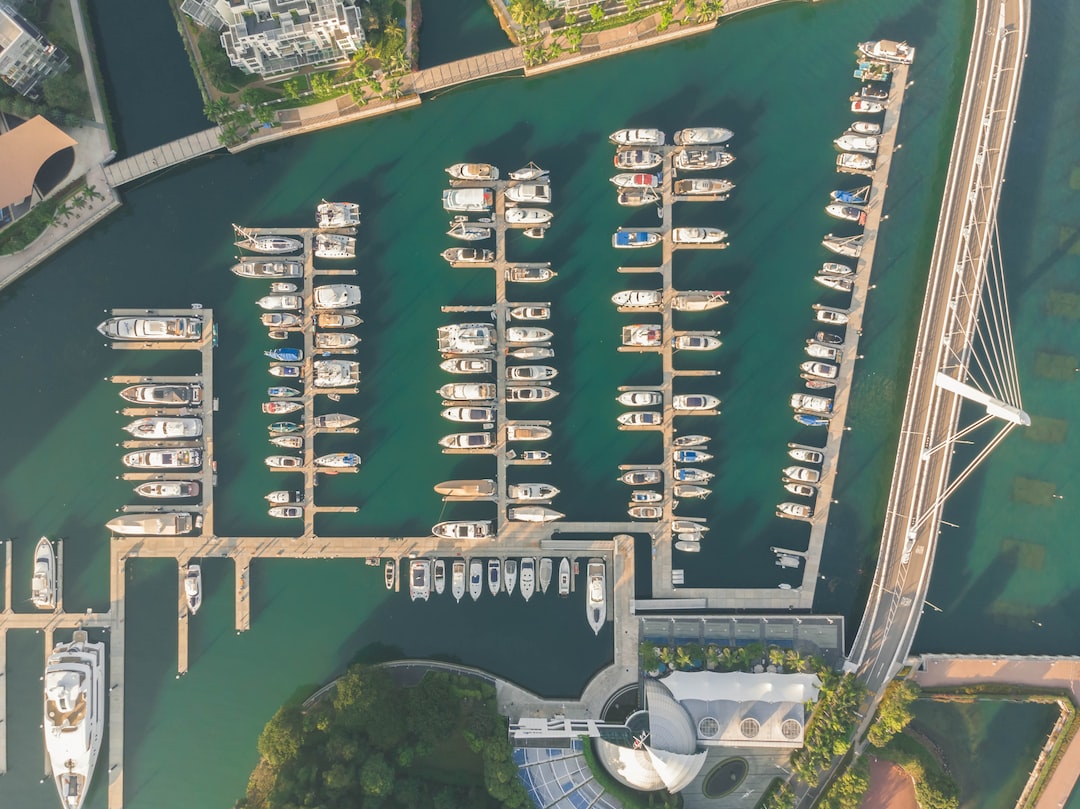
How fast is the hydrofoil catamaran?
Hydrofoil catamarans can reach impressive speeds, depending on various factors such as the design, wind conditions, and skill of the sailor. Some high-performance hydrofoil catamarans can exceed 40 knots (46 mph) or more. However, the exact speed will vary based on these factors.
How does a foil catamaran work?
A foil catamaran, also known as a hydrofoil catamaran, works by utilizing hydrofoils to lift the hulls out of the water. These foils generate lift as the boat gains speed, reducing drag and allowing for faster and smoother sailing. The lift created by the foils enables the catamaran to “fly” above the water, resulting in increased speed and improved performance.
What happened to hydrofoils?
Hydrofoils have a rich history and have been used in various applications, including passenger ferries, military vessels, and recreational boats. While hydrofoils experienced a surge in popularity in the mid-20th century, their use declined in some sectors due to factors such as high costs, maintenance challenges, and the development of alternative technologies. However, hydrofoils continue to be used in niche markets, including high-performance sailing and racing.
Read more about “… What is the World’s Largest Hydrofoil Boat?”
Are hydrofoil boats more efficient?
Yes, hydrofoil boats are generally more efficient than traditional boats. By lifting the hulls out of the water, hydrofoils reduce drag and allow the boat to sail faster while using less power. This increased efficiency translates to longer sailing distances and reduced fuel consumption. However, it’s important to note that the efficiency gains may vary depending on factors such as the design, sailing conditions, and skill of the sailor.
Hydrofoil catamarans offer an exhilarating and thrilling experience on the water. With their incredible speed, maneuverability, and stability, they have become a favorite among sailors and water sports enthusiasts. While they may come with a higher price tag and require some skill to master, the rewards of foiling on a hydrofoil catamaran are well worth it.
When choosing a hydrofoil catamaran, consider factors such as your skill level, intended use, budget, and the reputation of the brand. Take the time to research and test different models to find the perfect catamaran for your needs.
So, are you ready to take flight on a hydrofoil catamaran? Embrace the thrill, experience the freedom, and enjoy the incredible sensation of soaring above the water. Happy foiling!
- Hydrofoil History
- Advanced Hydrofoiling Techniques
- Hydrofoil Equipment Reviews
- Why do boats not use hydrofoils?
- iFLY15 – iFLY Razzor Pro – Foiling Catamaran
- Hydrofoil Catamarans on Amazon
- Hydrofoil Catamarans on Walmart
- Hydrofoil Catamarans on Etsy
Review Team
The Popular Brands Review Team is a collective of seasoned professionals boasting an extensive and varied portfolio in the field of product evaluation. Composed of experts with specialties across a myriad of industries, the team’s collective experience spans across numerous decades, allowing them a unique depth and breadth of understanding when it comes to reviewing different brands and products.
Leaders in their respective fields, the team's expertise ranges from technology and electronics to fashion, luxury goods, outdoor and sports equipment, and even food and beverages. Their years of dedication and acute understanding of their sectors have given them an uncanny ability to discern the most subtle nuances of product design, functionality, and overall quality.
Related Posts
Does foil surfing have a motor [2024] 🏄♂️.
- May 2, 2024
Can You Foil Surf in Flat Water? [2024] 🏄♂️
Catch the wave: the ultimate beginner’s guide to prone foil boarding [2024] 🌊.
- April 28, 2024
Leave a Reply Cancel Reply
Your email address will not be published. Required fields are marked *
Add Comment *
Save my name, email, and website in this browser for the next time I comment.
Post Comment
Trending now

Yachting World
- Digital Edition

Foiling and Hydrofoiling: Everything you need to know

A foiling International Moth dinghy. Photo: Christopher Ison / Alamy
What is foiling?
Although foiling or hydrofoiling feels like a recent revolution to take the world of watersports by storm, it is actually much older than many appreciate.
In terms of motorised waterborne craft, the first foiler was a motorboat designed and built by Italian inventor Enrico Forlanini in 1906.
It did, however, take quite a bit of time before foiling boats with sails took to the water, but even then many people might be surprised to learn that even in the 1970’s the foiling trimaran, Williwaw, covered over 20,000 sea miles in and around the South Pacific all on its foils.
It turns out the history of hyrofoiling goes back further than many think.
It was not until the early-2000s that foiling really started to take hold, with a development dinghy class, the International Moth, leading the way.
Foiling boats
With huge amounts of interest in the 11ft Moth dinghy, foiling began to spread throughout the sport of sailing. And it was not long until hydrofoiling boats of all different shapes and sizes were taking the water.
Over time, some traditional classes converted to foiling – the A-Class and C-Class catamarans being examples. But more new boats were also designed specifically with hydrofoiling in mind.
In 2013 Emirates Team New Zealand built their 72ft America’s Cup catamaran to be a foiler, forcing their competition for the Cup, Oracle Team USA to convert their AC72 into a foiler to stay competitive – ultimately Oracle Team USA won the Cup in one of the biggest sporting comebacks of all time .
To date the America’s Cup has not looked back with the competition taking place in smaller hydrofoiling AC50 catamarans in 2017 and the newly conceived monohull foilers, the AC75 s, in 2021.
In 2021 the Olympics Games introduced the first ever foiling catamaran in the Nacra 17.
Foiling yachts
Offhsore, 90ft Ultime multihulls on their foils are competing to be the fastest to race around the globe and design houses across the globe are racing to create foiling yachts for the masses which could dramatically reduce cruising times from one destination to the other.
There are also many classes of yacht that are taking some of the lessons from fully foiling craft and putting them to use in a semi-foiling manner.
Here the biggest technical innovation is in the IMOCA60 class, which is famously used for the single handed non-stop round the world race, the Vendée Globe .
The latest couple of generations of IMOCA 60s have been build with huge, technologically complex foils to generate lift. These are powerful enough to lif the boats fully out of the water, but as yet the class rules do not allow for rudder foils which would stabilise flight and allow for full foiling.
Where sailing boats and yachts have, arguably led the way in the history of foiling over the past decade or so this has filtered down into a plethora of other watersports craft.
Although in the early days foiling was typically the preserve of elite sailors and watersports professionals, increasingly we have seen boats and boards designed to foil in the hands of the average sailor, surfer or windsurfer.
This race to bring the fun of foiling to beginners is continuing apace with beginner foiling boats, windsurfers, surfers etc. coming to the market every year.

12 dream sailing experiences – from dreamy adventures to high-octane thrills
- May 15, 2024
We’re all seeking experiences. Whether that’s taking on a sporting challenge, going on above-averagely-adventurous holidays, or learning a new hobby or skill, we live in an era where ‘doing’ is…

Ainslie’s team reveals Britain’s new America’s Cup boat
- April 20, 2024
The British America’s Cup team has become the fourth challengers to unveil their new AC75. INEOS Britannia revealed their AC75 in the early hours of morning, as the foiling monohull…

World’s coolest yachts: Monitor – the 1955 foiling boat
- February 29, 2024
“It has to be Monitor, of course! The father of all flying rockets!” says Desjoyeaux. One of the world’s first sailing hydrofoils, Monitor was created in 1955 by Gordon Baker,…

North Atlantic in six days solo: Arkea Ultim Challenge leaders cross the Equator
- January 13, 2024
Less than a week after setting out from the start in Brest, the leading Ultim trimarans in the Arkea Ultim Challenge have crossed the Equator. First to enter the Southern…

Six solo skippers ready to race 100ft foiling multihulls around the world
- January 4, 2024
There are very few ‘firsts’ left in the world of sailing, but one such remaining barrier could be smashed when the Arkea Ultim Challenge Brest sets off from north-west France…

How to turbo-charge a round the world racer
- November 28, 2023
Ahead of me, the bow of Medallia is pointing at the sky. This is not poetic license; I am actually looking upwards at my bowsprit as it rises up, 50ft…

Slingsby and Neuschäfer crowned Sailors of the Year 2023
- November 15, 2023
The 2023 Rolex World Sailor of the Year awards were presented to Tom Slingsby and Kirsten Neuschäfer last night at a ceremony by World Sailing in Málaga, Spain. The popular…

Le Cléac’h and Josse win the 2023 Transat Jacques Vabre
- November 13, 2023
French duo Armel Le Cléac’h and Sébastien Josse sailing Maxi Banque Populaire XI have won the Transat Jacques Vabre 2023, crossing the finish line at 18:19hrs local time (22:19hrs UTC)…

We’re astounded by this new foiling superyacht: Baltic 111 Raven
- October 19, 2023
Wow…! This foil-assisted, ultra-lightweight superyacht breaks new ground in many respects and Baltic says it is “one of the most extreme yachts” the yard has built in its 50-year history.…

5 reasons to follow the 30th anniversary Transat Jacques Vabre
- October 12, 2023
The Transat Jacques Vabre is one of the ultimate tests of short-handed racing, a double-handed dash from France that sees many of the world’s top racing machines take on the…

How to follow the America’s Cup preliminary regatta
- September 11, 2023
The six competing teams in the 37th America’s Cup are set to get their first chance to line up competitively against one another at the first America’s Cup Preliminary Regatta,…

World’s fastest monohull: Malizia-Seaexplorer IMOCA 60
- August 17, 2023
Followers of the IMOCA 60 fleet will know that two names have dominated the class over the past two generations when it comes to design: VPLP and Verdier. So, it’s no…

IMOCAs win race to Cherbourg with Macif first monohull in Rolex Fastnet Race
- July 24, 2023
In the battle of the big boats it was the brand new IMOCA Macif, skippered by Charlie Dalin with Pascal Bidégorry which was first monohull home to take line honours in…

Rolex Fastnet Race 2023 stacked IMOCA fleet set to entertain
- July 20, 2023
The famous Rolex Fastnet Race always provides an intriguing line up of amateur and professional teams all looking for race glory as they battle the 629nm course from Cowes, round…

Two giant foiling trimarans set for a Fastnet Race battle
- July 18, 2023
As with most big races around the world, bragging rights in the Rolex Fastnet Race race are split into two broad camps, the line honours winners (the first boat to…

First look: Persico 72ft 40-knot foiling cruising cat
- July 7, 2023
The new foiling catamaran design is the result of Persico’s strategy to translate knowledge the yard gains from its work in aerospace, IMOCA 60 and America’s Cup spheres into very…

11th Hour Racing declared winners of The Ocean Race after redress
- June 29, 2023
Charlie Enright’s 11th Hour Racing Team has won The Ocean Race after a jury awarded them redress of 4 points in the final leg of the round the world race,…

World’s coolest: IKA Kitefoil
- June 5, 2023
“Watching the gracefulness of kitefoil racing had me mesmerised the first time I saw it,” explains Will Harris. “It is an example of pure efficiency and use of all and…

F1 star Sebastian Vettel backs new German SailGP team
- May 31, 2023
Four-time F1 World Champion Sebastian Vettel and double Olympic sailing bronze medallist Erik Heil have joined forces, alongside team owner Thomas Riedel, to announce a brand new German SailGP Team.…

Extraordinary boats: The Sam Manuard foiling mini 6.50
The past few years have seen an explosion of activity in the Mini 6.50 class, with qualifying races for the iconic Mini Transat race oversubscribed by up to 100% and…

Hydrofoil Boats: Exploring the Future of Watercraft Technology
Traditional watercraft are lagging behind in efficiency and eco-friendliness, struggling to meet the demands of modern maritime travel.
Imagine the drag, the noise, the fuel consumption – it’s not just about speed; it’s about the impact on our oceans, the inefficiency, and the outdated experience.
Enter Hydrofoil Boats! Cutting-edge technology meets sustainability in these innovative vessels. Glide over water with unparalleled speed, minimal environmental impact, and a silent, smooth ride that redefines maritime transport.

Despite the fact that the foiling technology has been present for more than a century, hydrofoil boats have recently gained popularity among boat enthusiasts. Superyachts, racing boats, ferries, and many other types of watercraft have all used hydrofoil technology to increase their speed and efficiency.
A hydrofoil is a wing-like structure that supports a boat which produces lift as the boat’s speed rises. Lowering drag and keeping the boat above the waves, helps the boat travel quicker and more smoothly.
Given that hydrofoil boats are currently in the news once more, it is time to discuss what they are, how they operate, their benefits and drawbacks, and a serious assessment of whether or not they represent the future of boating. We’ll cover everything there is to know about hydrofoils in this article.
The History of Hydrofoils
Casey Baldwin, Enrico Forlanini, and Alexander Graham Bell—the same person who created the telephone—developed the hydrofoil technology first. By 1909, Forlanini had an operational prototype on Italy’s Lake Maggiore. The German and US Navy used the hydrofoil boat to travel through waters that were heavily mined during WWII.
The hydrofoil technology was applied to water sports in the 1960s, 1970s, and 1980s, where it was employed in kiteboards, surfboards, and air chairs. When racing teams utilized it to break speed and time records in world sailing competitions in the 2010s, it caught consumers’ attention once more. Most lately, boat manufacturers have been experimenting with the use of hydrofoils on smaller boats using outboard and propelled engines.
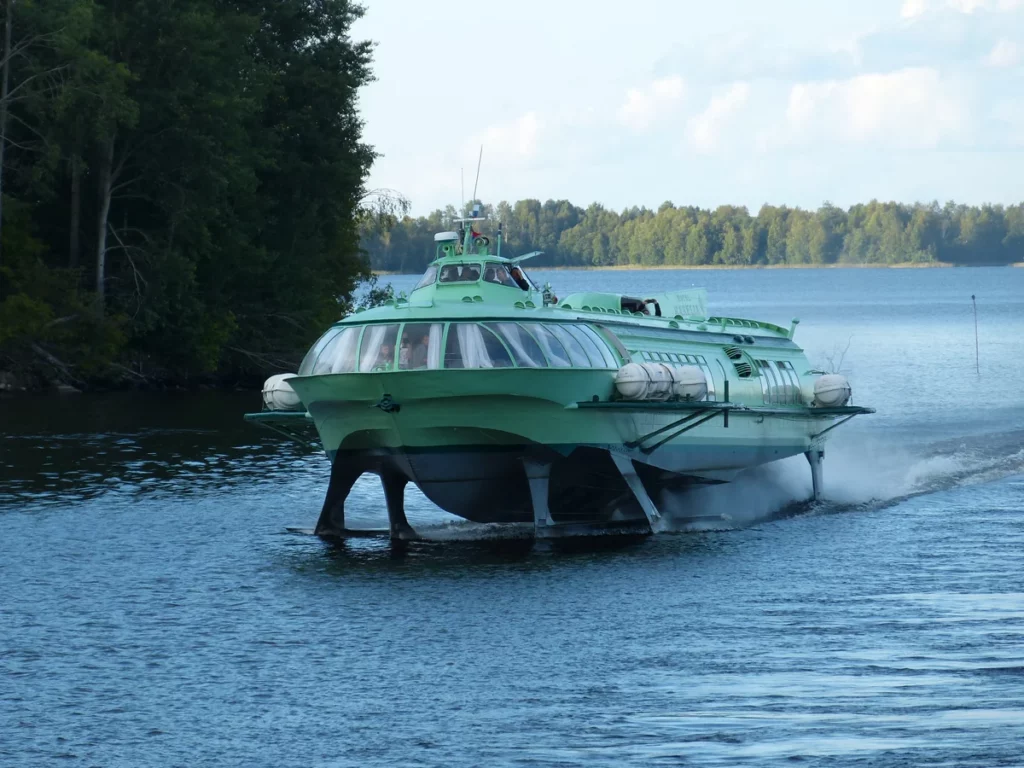
The Working Principle Of Hydrofoil Boats
A “hydrofoil” is a structure made of a wing (V), T, or U form that supports a hydrofoil boat. Surface-piercing and fully submerged hydrofoil boats are the two different varieties. The boat is raised off the water’s surface at high speeds using both varieties of hydrofoils.
When moving quickly enough, the lift from the foils is sufficient to lift the boat’s whole hull clear of the water, leaving just the foils themselves in contact with the surface. This offers amazing advantages in speed, effectiveness, and experience, all of which we will discuss soon.
Aero foils used on airplanes achieve similar results as hydrofoils in terms of reducing drag and increasing speed.
Like other power boats, hydrofoil boats are primarily propelled by propellers or water jets. Having said that, hydrofoil boats are also quite well-liked in sailing. However, using hydrofoils on sailboats requires a lot of technical skill and is primarily employed by racing teams . Commercial boats utilize them the most frequently, but lately, leisure boats are introducing them to the general public.
We are aware that hydrofoils reduce drag and allow boats to travel at higher speeds, but how does that actually work? As hydrofoil boats are essential “a boat with wings,” is the best way to describe them. When a hydrofoil boat picks up speed, it too lifts off the water, just like an airplane would do.
Large ships and ferries can frequently be lifted from the surface by their entire hulls , even while the foils themselves are immersed in the water. Being in a hydrofoil boat has a similar sensation to being in a plane with restricted airspace. It moves quickly and smoothly.
Hydrofoils require additional technology at the consumer level. Hydrofoils can have costly price tags, as we’ll discuss later. As you might expect, there are considerable safety risks associated with a boat that literally “wings” through the air.
An automatic control system that maintains flying height, foil pitch and rides smoothness is necessary for hydrofoils. This “autopilot” technology prevents the boat from smashing back into the water after it has been lifted from the surface by allowing the foil to move safely in and out of the water.
Environmental Impact and Sustainability of Hydrofoil Boats
The emergence of hydrofoil boats, particularly electric hydrofoils, marks a significant stride toward more sustainable watercraft technologies. Their environmental impact is a critical aspect of their appeal, offering a greener alternative to traditional boats.
Reducing Carbon Footprint
- Electric Propulsion : The switch from fuel-based to electric propulsion systems in hydrofoil boats greatly reduces emissions. Electric hydrofoils emit zero direct greenhouse gases, significantly cutting down the carbon footprint associated with maritime activities.
- Energy Efficiency : Hydrofoils are designed to lift the hull out of the water, drastically reducing drag and thus, energy consumption. This efficiency is a cornerstone in their sustainable design, allowing for longer ranges while consuming less power.
Noise Pollution and Marine Life
- Silent Operation : Unlike conventional boats, electric hydrofoils operate silently. This reduction in noise pollution is crucial for the well-being of marine life, which can be severely disrupted by the loud engines of traditional boats.
- Minimal Water Disruption : The unique design of hydrofoils minimizes their wake and reduces water turbulence. This has a lesser impact on marine ecosystems compared to standard hull designs , which can cause more substantial water disturbances.

Sustainable Materials and Manufacturing
- Eco-friendly Materials : Innovations in hydrofoil construction include the use of sustainable materials. Manufacturers are increasingly adopting recyclable composites and eco-friendly resins, contributing to a reduced environmental footprint in the production phase.
- Lifecycle Impact : The long-term sustainability of hydrofoils also hinges on their lifecycle impact. From manufacturing to end-of-life disposal, efforts are being made to ensure that every stage is as environmentally friendly as possible.
Challenges and Future Directions
- Battery Technology : One of the main challenges in electric hydrofoils is the development of more efficient and eco-friendly battery technology. Advancements in this area will be pivotal in enhancing the sustainability of hydrofoil boats.
- Renewable Energy Integration : Integrating renewable energy sources, such as solar panels, could further elevate the eco-credentials of hydrofoil boats, making them a truly green mode of maritime transport.
Innovative Designs and Latest Models in Hydrofoil Boats
The hydrofoil market is witnessing a surge in innovative designs and cutting-edge models, redefining the boundaries of maritime technology. This section delves into the latest trends and groundbreaking models that are shaping the future of hydrofoil boats.
Emerging Trends in Hydrofoil Design
- Aerodynamic Efficiency : Modern hydrofoils are embracing sleek, aerodynamic designs that not only enhance speed but also improve energy efficiency. These designs reduce drag and optimize lift, crucial for electric hydrofoils where battery life is a key factor.
- Modular Construction : Some of the latest hydrofoils feature modular designs, allowing for customization and adaptability to different use cases, from leisure cruising to high-speed transport.
- Smart Technology Integration : Advanced navigation systems, IoT connectivity, and automated control systems are becoming standard features in new hydrofoil models. This integration of smart technology enhances safety, performance, and user experience.
Notable Models Making Waves
- Navier 27 : As a frontrunner in the electric hydrofoil sector, the Navier 27 stands out for its range and efficiency. It’s America’s first fully electric hydrofoil, offering a silent, emission-free experience without compromising on speed or luxury.
- Candela C-8 : Hailing from Sweden, the Candela C-8 is celebrated for its blend of performance and sustainability. It’s equipped with a groundbreaking hydrofoil system that delivers a smooth ride with significantly reduced energy consumption.
- SEAir Flying RIB : The SEAir Flying RIB is a testament to versatility in hydrofoil design. This model can be used both as a leisure craft and for professional purposes, showcasing a robust design that can handle various sea conditions.
Focusing on User Experience
- Comfort and Stability : One of the key focus areas in recent hydrofoil designs is the enhancement of passenger comfort. Hydrofoils, by design, offer a smoother ride by gliding over the water’s surface, reducing motion sickness and discomfort.
- Ease of Operation : User-friendly interfaces and simplified control systems are being prioritized to make hydrofoil boats more accessible to a broader range of users, from maritime professionals to boating enthusiasts.
Sustainability Meets Luxury
- Eco-Luxury Models : Several high-end hydrofoil models are merging luxury with eco-friendliness. These boats offer premium amenities while adhering to sustainable practices, appealing to a market that values both comfort and environmental responsibility.
What Are The Pros And Cons Of Hydrofoil Boats?
The main benefits of Hydrofoils are listed below,
· Speed : This is not shocking. The majority of hydrofoils, whether they are used in sailboats, ferries, or other commercial vessels, can “fly” at speeds considerably above 50 knots (60 mph).
· Comfort : Because the boat’s hull is off the water, most waves and wakes barely affect it, leaving passengers with little to no noticeable discomfort. It is a smooth ride as a result.
· Stabilization : The boat’s stability is improved because comfort is increased (at high speeds). The hydrofoils slice across the water, lowering the watercraft’s motion index.
· Efficiency : Hydrofoils travel significantly more quickly to their destination since they aren’t affected by tiny waves and wakes that would slow most boats down. This efficiency encourages a significantly greater fuel economy for boats with conventional propellers or jet engines.
· Experience : Boating is like no other activity because of the reduced drag and wave impact. You really do feel as though you are “flying” just over the water’s surface.
The main drawbacks of Hydrofoils are found to be,
· When compared to operating a typical runabout boat, operating a hydrofoil is far more technical and demands a much more sophisticated skill set.
· Hydrofoils are only appropriate for open water or huge lakes (as of now). They are NOT appropriate for shallow water because any bottom impacts while moving could be fatal for both the passengers and the boat.
· Range of Speeds : Hydrofoils can only “fly” at particular speeds. Every boat will have a preferred speed range in which to operate. Due to the fact that the hull and foils are immersed in the water, anything below that range will result in increased drag. Anything above the range becomes hazardous and out of control.
· Costs of maintenance: Sophisticated technology requires complex maintenance and storage.
· They aren’t cheap overall. Consumer-level boats that are more in demand might cost upwards of $300,000.
Consumer Accessibility and Market Trends
The hydrofoil boat market is evolving rapidly, with consumer accessibility and market trends shifting in response to technological advancements and changing demands.
Availability and Market Expansion
- Growing Market Presence : Hydrofoil boats are becoming increasingly available worldwide, with manufacturers expanding their reach to cater to a global audience.
- Diverse Range for Different Budgets : The market now offers a range of hydrofoil boats, from luxury models to more affordable options, making them accessible to a broader consumer base.
Pricing Dynamics
- Premium Pricing for Advanced Models : High-end hydrofoil boats, especially those with advanced technology and luxury features, come with a premium price tag. However, this cost is often justified by their superior performance and lower operational expenses.
- Cost-Efficiency in the Long Run : Despite the initial higher investment, hydrofoil boats can be more cost-effective in the long run due to lower fuel consumption and maintenance costs.
Consumer Trends and Preferences
- Sustainability as a Key Factor : Environmental consciousness is driving consumer preferences, with more buyers opting for eco-friendly models like electric hydrofoils.
- Adaptability and Usage : Consumers are also looking for versatility in use – from leisure and tourism to practical applications like commuting.
Hydrofoil Boats in Competitive Sports and Racing
Hydrofoil boats are making a significant impact in the world of competitive sports and racing, known for their speed and efficiency.
Racing Circuits and Competitions
- High-Speed Competitions : Hydrofoil boats are becoming a mainstay in high-speed racing competitions, thrilling audiences with their exceptional speed and maneuverability.
- Innovations in Racing Models : Racing hydrofoils are continually being refined for better performance, with tweaks in design for maximum speed and agility.
Popularizing in Sports
- Growing Interest : The excitement and challenge of hydrofoil racing are attracting more participants and spectators, contributing to its growing popularity in the sports world.
- Training and Skill Development : As the sport grows, so does the availability of training programs and facilities for aspiring hydrofoil racers.
Technological Advancements in Hydrofoil Control Systems
The safety and performance of hydrofoil boats are heavily reliant on their control systems, and recent technological advancements have been transformative.
Innovations in Control Technology
- Automated Control Systems : Advanced hydrofoils are equipped with automated control systems that adjust the foils for optimal performance and stability in varying conditions.
- Integration with AI and Machine Learning : Some hydrofoils are now utilizing AI and machine learning algorithms to enhance navigation and operational efficiency.
Safety Enhancements
- Advanced Safety Features : Modern hydrofoils come with enhanced safety features, including collision avoidance systems and improved emergency response mechanisms.
- Reliable Performance in Diverse Conditions : Enhanced control systems allow hydrofoils to operate safely in a wider range of weather and sea conditions.
Comparative Analysis: Hydrofoil Boats vs. Traditional Boats
Comparing hydrofoil boats with traditional boats reveals distinct differences in performance, cost, and usage.
Performance Comparison
- Speed and Efficiency : Hydrofoil boats generally offer higher speeds and better fuel efficiency due to reduced drag.
- Stability and Comfort : The design of hydrofoils provides a smoother ride, especially in choppy waters, enhancing comfort and reducing motion sickness.
Cost Analysis
- Initial Investment : Hydrofoil boats typically require a higher initial investment compared to traditional boats.
- Operational Costs : Over time, the operational costs of hydrofoils can be lower due to their efficient fuel usage and lower maintenance requirements.
Usage Scenarios
- Versatility : Hydrofoils are versatile in their application, suitable for everything from leisure cruising to professional racing.
- Environmental Impact : Hydrofoils, especially electric models, have a significantly lower environmental impact, making them a more sustainable choice.
Will Hydrofoils Revolutionize The Boating Industry?
It’s difficult to predict whether or not hydrofoils will become more widely used among consumers. Hydrofoil boats are currently merely pleasant toys for the privileged. Before you see them on your local river, manufacturers still have a few operational challenges to solve.
Hydrofoils are only suitable for huge lakes or wide seas due to their vulnerability to damage in shallow water. Although they are not yet as prevalent as your typical jet boat, hydrofoils are becoming more and more well-liked. You shouldn’t be shocked if you start to see more of them if the nearby water is a huge lake or wide ocean.
Future Prospects: Hydrofoil Technology in Maritime Transport
The application of hydrofoil technology in maritime transport is poised for transformative growth, offering potential solutions to some of the industry’s most pressing challenges.
Expanding Beyond Recreational Use
- Commercial Transportation : Hydrofoils are being eyed for commercial transportation, including passenger ferries and cargo vessels. Their speed and efficiency could revolutionize how goods and people move across water.
- Tourism and Leisure Industry : In the tourism sector, hydrofoils offer an attractive option for high-speed sightseeing tours and luxury travel, combining speed with comfort.
Large-Scale Environmental Benefits
- Reducing Maritime Emissions : With the maritime industry increasingly focused on reducing its carbon footprint, hydrofoils, particularly electric models, present a viable solution to cut down emissions.
- Minimizing Impact on Marine Ecosystems : The reduced wake and lower noise levels of hydrofoils can help mitigate the impact on marine life, a significant consideration for eco-conscious maritime operations.
Innovations in Ferry and Cargo Services
- High-Speed Ferries : Hydrofoil technology is ideal for ferry services, where speed and efficiency are paramount. Cities with significant waterway networks could see a transformation in their public transport systems.
- Efficient Cargo Transport : For cargo transport, hydrofoils could offer faster delivery times, potentially reshaping supply chain dynamics, especially for time-sensitive goods.
Challenges and Research Areas
- Infrastructure Development : A key challenge is the development of infrastructure that can support the unique needs of hydrofoil vessels, including docking and maintenance facilities.
- Ongoing Research and Development : Continuous research is needed to improve the scalability, safety, and environmental impact of hydrofoils in large-scale maritime transport.
Hydrofoils offer certain undeniable advantages over conventional powerboats. They get lifted off the water, which increases speed and reduces drag while also facilitating a more relaxing and effective ride. Having said that, their manufacturing and maintenance costs have raised their price beyond what the majority of people can bear.
Hydrofoil boats are a revolutionary type of watercraft that utilizes advanced technology to glide over the water’s surface. These boats are designed with special wings that create lift, allowing them to reach high speeds and deliver an unparalleled experience to their passengers. In this blog post, we will explore the exciting world of hydrofoil boats and discover how they are changing the future of watercraft technology .
Frequently Asked Questions (FAQs)
What is a hydrofoil boat.
A hydrofoil boat is a type of watercraft that uses a wing-like structure called a hydrofoil to produce lift as the boat’s speed rises. The hydrofoil helps to keep the boat above the waves, lowering drag, and allowing the boat to travel faster and more smoothly.
How do hydrofoil boats work?
Hydrofoil boats are supported by wing-like structures that create lift as the boat moves forward. When the boat reaches a certain speed, the lift generated by the hydrofoils becomes strong enough to lift the entire hull of the boat out of the water, leaving only the hydrofoils in contact with the surface. This reduces drag and allows the boat to travel faster and more efficiently.
What are the benefits of hydrofoil boats?
Hydrofoil boats offer several benefits, including increased speed, comfort, stability, efficiency, and a unique boating experience. Because the boat’s hull is lifted off the water, passengers experience little to no discomfort from waves and wakes, and the boat travels more efficiently, which can lead to greater fuel economy.
What are the drawbacks of hydrofoil boats?
Hydrofoil boats are more technically advanced than typical runabout boats, and they require a more sophisticated skill set to operate. They are also only suitable for open water or large lakes and are not appropriate for shallow water due to the risk of bottom impacts while moving.
What is the history of hydrofoil boats?
Hydrofoil technology was first developed by Casey Baldwin, Enrico Forlanini, and Alexander Graham Bell in the early 1900s. It was used by the German and US Navy during World War II and later employed in water sports in the 1960s, 1970s, and 1980s. More recently, hydrofoil technology has been used in racing boats and ferries, and boat manufacturers have been experimenting with hydrofoils on smaller boats using outboard and propelled engines.

About the author
I worked as an officer in the deck department on various types of vessels, including oil and chemical tankers, LPG carriers, and even reefer and TSHD in the early years. Currently employed as Marine Surveyor carrying cargo, draft, bunker, and warranty survey.
Leave a Reply Cancel reply
Your email address will not be published. Required fields are marked *
Save my name, email, and website in this browser for the next time I comment.
Latest posts
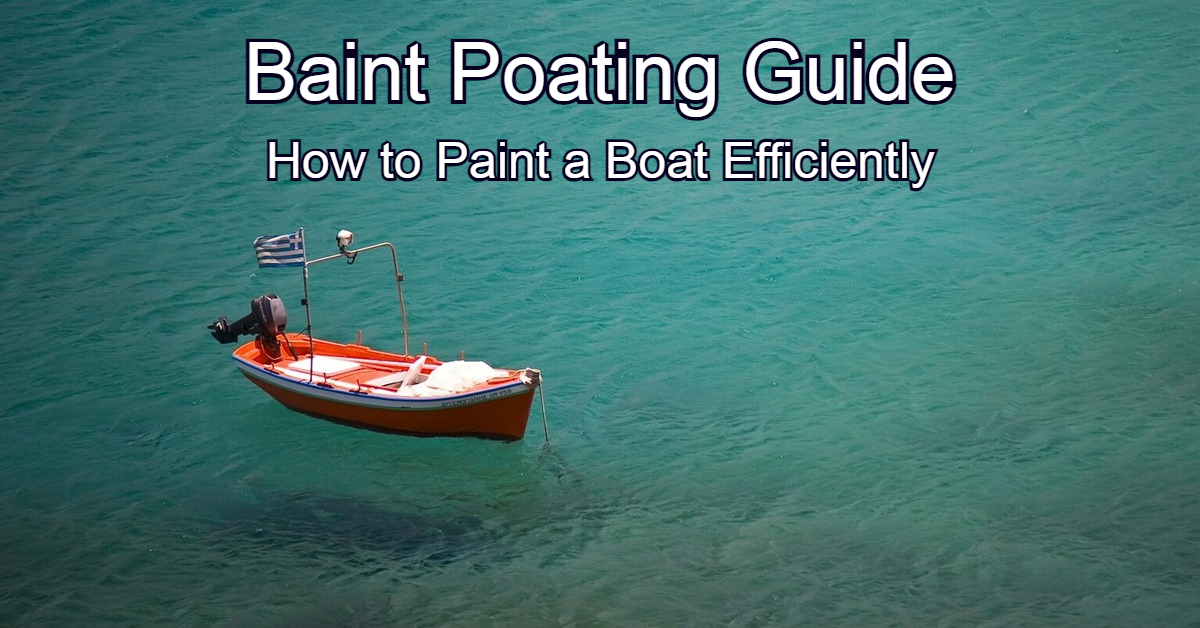
Boat Painting Guide: How to Paint a Boat Efficiently
Interested in learning how to paint a boat? Boat paint has to be tailored for water transportation and extreme weather conditions.

What Is a TEU In Regards to Marine Shipping?
What is a TEU? A twenty-foot equivalent unit (TEU) is a widely accepted standard unit of measurement in marine shipping, representing the capacity of a standard 20-foot-long container.
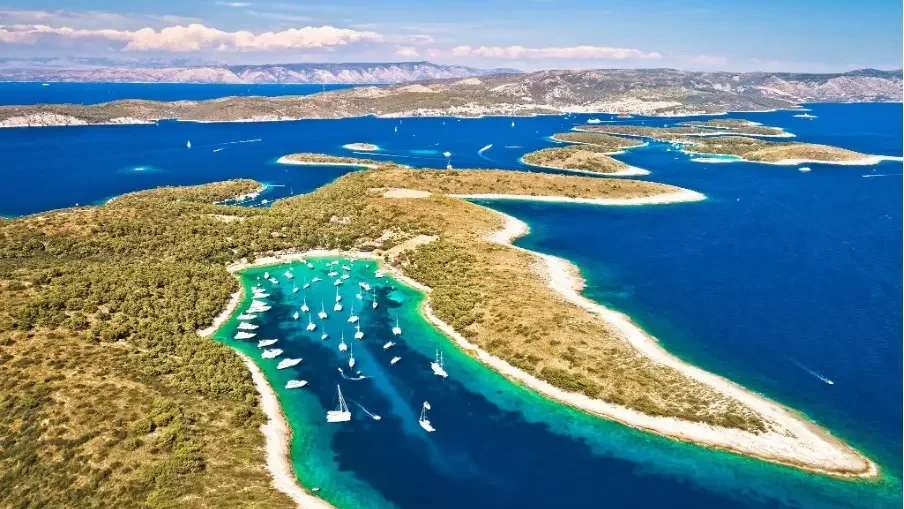
Sustainable and Luxurious: Discovering Split’s Yachting Paradise
Split, the Adriatic jewel, offers a yachting paradise where history meets pristine maritime beauty. Here, to rent a yacht means unlocking the gateway to exploring secluded bays, experiencing cultural heritage […]
The P-12 has taken flight. Read more here.
Foiling vs. Floating; Understanding the Differences Between Hydrofoil Boats and Other Boats
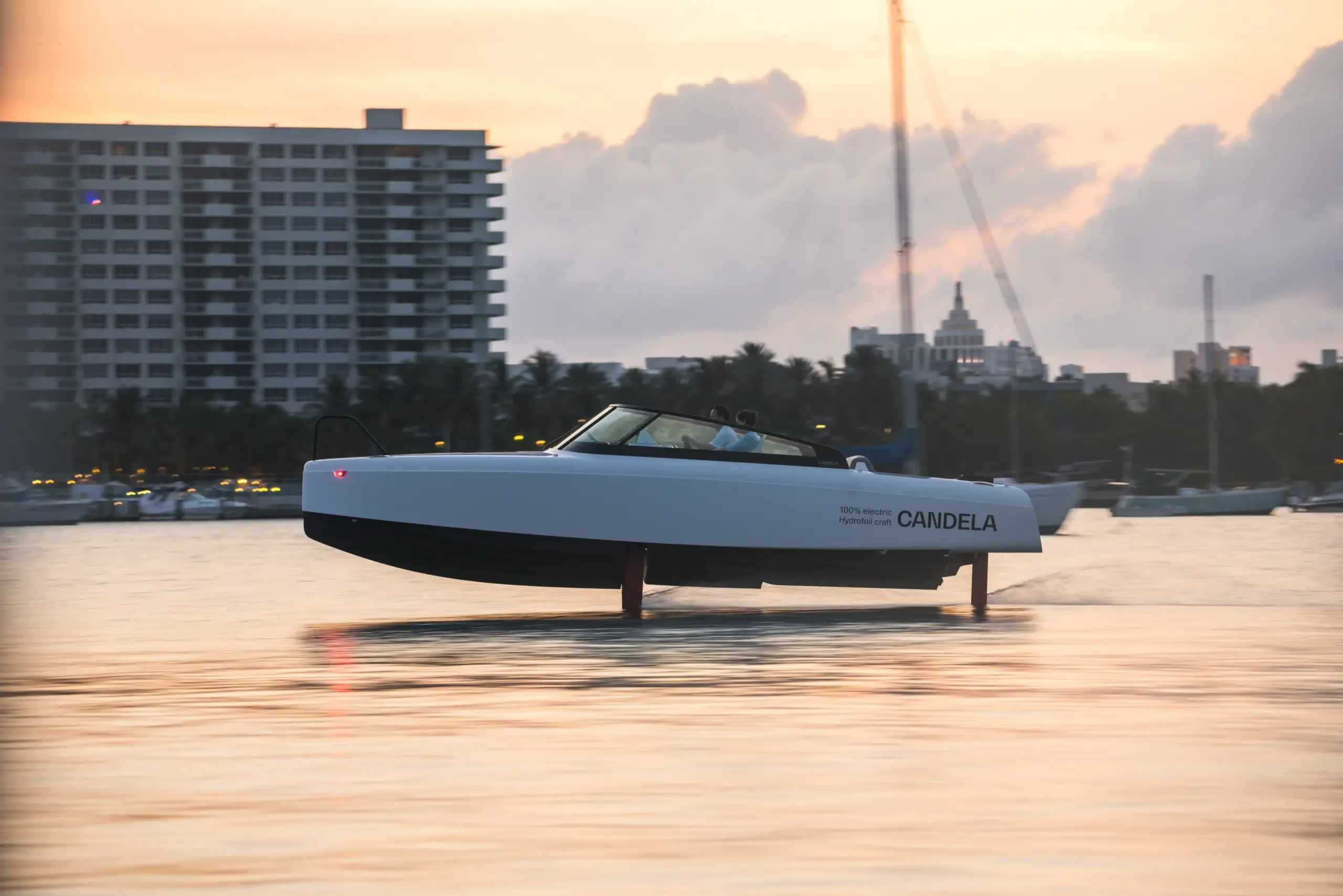
The difference between hydrofoil boats and other boats, is all about the lift. Hydrofoils rise above the water’s surface thanks to their wing-like structures, which drastically cuts down on drag and boosts their speed. This is a stark contrast to traditional boats that remain immersed and are slowed by water resistance.
Read on as we explain the innovative design of hydrofoils and how it affects everything from speed to fuel efficiency.
What is a Traditional, Displacement Boat?
A displacement boat represents one of the oldest types of hull designs. It moves through water by pushing it aside, unlike planing boats that ride on top. These boats are known for their efficiency and slower speed. In marine design, a common rule associates the speed of a displacement boat with its length, often expressed as hull speed. This estimate indicates the maximum speed a displacement hull can efficiently achieve without increasing resistance and fuel consumption significantly. For instance, a 6-meter boat can reach about 6 knots, while a 7-meter boat can achieve slightly under 7 knots.
Beyond hull speed, increasing speed demands significantly more power, becoming inefficient as the boat climbs the stern wave instead of slicing through water. A distinguishing design feature of many traditional displacement boats is their narrower and shallower hulls. Canoes and some rowboats are prime examples, benefiting from longer waterlines which enhance their efficiency.
Traditional displacement boats typically rely on conventional propulsion methods like paddles, oars, and sails, although they can also be motor-driven. Examples include most sailboats, barges, houseboats, and other slow-moving vessels.
Examples of Planing Boats
Planing motorboats come in various shapes and sizes, each tailored for specific purposes. They are equipped with different engines for leisure and commercial activities. As a planing boat accelerates, its flat or semi-V-shaped hull forces water downward. According to Newton’s third law (for every action, there is an equal and opposite reaction), this action creates an upward force, lifting the hull above the water’s surface.
This mechanism allows the boat to cruise at higher speeds than a displacement boat. However, it also requires a significant amount of power. For example, a 25-foot powerboat uses 15 times more energy per mile than a standard car. Planing boats gained popularity only after powerful car engines were adapted for marine use following World War II. Today, this type of boat dominates the market, ranging from fishing boats to cruisers and racing boats.
Fast waterborne transport, with high power needs, is among Earth’s most polluting and costly transportation modes.
Exploring the Basics of Hydrofoil Technology
Hydrofoil technology isn’t new. Hydrofoils blend some of the best aspects of both displacement (efficiency) and planing boats (speed). However, they operate on a unique principle that allows them to achieve greater efficiency and speed.
Their roots trace back to the early 20th century, with inventors like Alexander Graham Bell and Casey Baldwin experimenting with surface-piercing designs. During World War II, military forces of several nations utilized experimental hydrofoil boats for their speed and agility. In the post-war period, hydrofoil designs have found applications in various fields, from military to water sports.
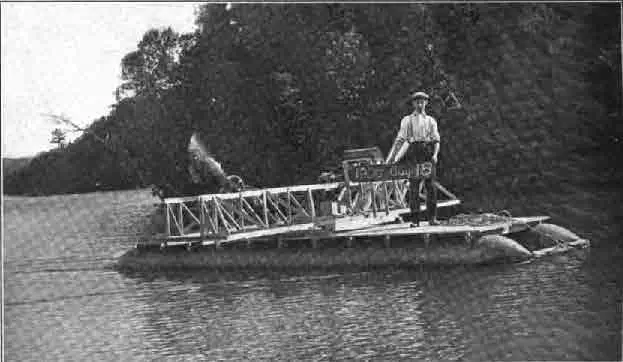
The secret to their effectiveness lies beneath the water. Hydrofoil boats generate upward force as they accelerate, offsetting the weight and allowing the hull to rise above water. It reduces drag, and enables the boat to maintain high speeds. This principle of fluid dynamics, similar to an airplane’s takeoff mechanism, distinguishes hydrofoil boats from their conventional counterparts.
Passengers in hydrofoil boats experience significantly reduced noise and vibrations, offering a more comfortable and less disruptive journey.

Comparing Hull Designs
Hydrofoil boat hulls significantly reduce water resistance and enable higher speeds compared to traditional hull designs. Large traditional displacement boats cut through water while smaller pleasure boats utilize hull shape and engine power to partially lift themselves for reduced drag.
V-shaped hulls are designed to handle rough waters more effectively than flat-bottomed hulls by slicing through waves. This provides a more comfortable ride at higher speeds.
Hydrofoil Design: Different Foil Configurations and Their Placement in Boats
Hydrofoil shapes have changed over time. Early 1900s hydrofoil designs, pioneered by Italian engineer Enrico Forlanini, primarily utilized ladder frame hydrofoils. They mimicked the shape of a ladder and allowed the boat to create lift proportional to the speed. Ladder frame designs found their way into some military prototypes and other use cases throughout the 20th century, but never became commonplace.
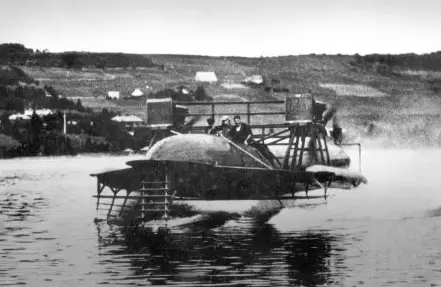
Hydrofoils vary in shapes and sizes, mainly categorized into two families: V and T-shaped foils. V-shaped foils generally form a V or U shape under the width of the boat in order to pierce the surface of the water, rising above the water surface when foilborne. This allows for self-stabilising when it comes to rolling movement.
T-shaped foils, are fully submerged beneath the water, typically featuring a horizontal wing rather than the curved wing seen in V-shaped hydrofoils. This allows them to be less affected by wave action, and, therefore, more stable at sea. They are also more efficient as they cause less drag. However, T-shaped foils are not self-stabilising. The angle of attack on the hydrofoils must be adjusted continuously to changing conditions. It requires the intervention of sensors and onboard computers. The Candela C-8 electric hydrofoil boat harnesses this technology.

Within these two families, many different variations and designs exist for a variety of purposes. America’s Cup class sailing boats use diverse designs to improve turning, speed, and stability, while leisure boats often prioritize designs that improve seakeeping and comfort.
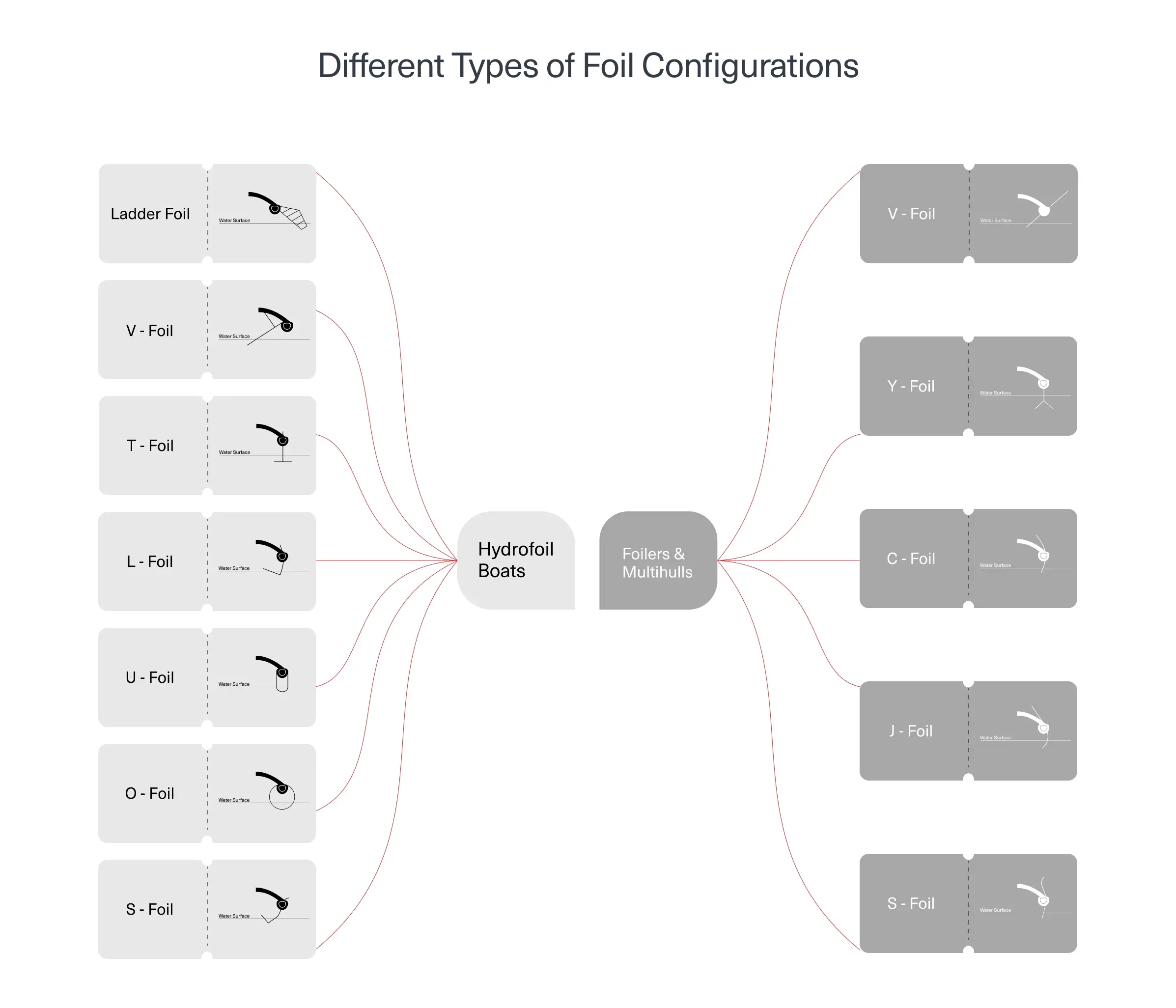
Manual and automatic hydrofoil retraction are increasingly common in modern hydrofoil boats, offering captains more operational flexibility. This also allows for easier maintenance and less concern over reefs and shallow areas. Boats like the C-8 showcase this retractable capability.
Performance Advantages of Hydrofoil Craft Over Conventional Vessels
Foil boats achieve higher speeds and superior performance relative to engine power, even in choppy waters, due to efficiency. By reducing air and water resistance by up to 80%, hydrofoils enable faster speeds and enhance stability against wave action.
This reduction in drag ensures a smoother and more efficient operation, making hydrofoil boats superior for navigating various water conditions.
Achieving Higher Cruise Speed
One of the key advantages of hydrofoil boats is their ability to maintain higher speeds in rough weather, as they simply fly over the waves. This is why the US and other navies pioneered the use of fully T-shaped hydrofoil ships, leading to fast patrol boats such as the Pegasus-class that could cruise at 48 knots. Hydrofoil boats are capable of:
- Lifting above the water surface at a speed of 11-22 knots depending on hydrofoil wing profile and other factors
- Achieving and maintaining higher speeds than conventional boats, given the same power
- Maintaining top speed even in less than ideal sea conditions
- Reducing drag significantly
This technology allows hydrofoil boats, including the fastest production sailboats, to excel in speed and efficiency.

Decreasing Drag
As conventional planing boats accelerate, the drag on their hulls increases due to increased water displacement and surface friction. Since hydrofoil boats lift above the water surface, increasing their speed can have the opposite effect: they become more efficient at high speeds compared to slow displacement speeds. This is due to the hull having minimal contact with the water, allowing for less friction and thus, less drag. It allows hydrofoil boats to travel at high speeds while consuming less energy, making them more economical with a smoother ride.
Reducing Fuel Consumption
Hydrofoil boats offer significant benefits in terms of fuel efficiency:
- Reduced drag, resulting in lower fuel consumption
- Up to 80% reduction in energy use compared to regular boats
Increasing Stability
Hydrofoils, especially fully submerged variants, can significantly increase stability of a boat. Since the hull of the boat has less contact with the waves, the result is less reaction to wave conditions. More specifically, hydrofoil boats control heave, roll, pitch, and yaw.
Partially submerged V foils remain stable in roll and maintain flight height automatically. On the other hand, fully submerged foils require an active control system to stabilize.
Practical Applications of Hydrofoil Boats
Hydrofoil technology has been used historically and is expected to gain widespread adoption due to its benefits in speed and efficiency.
Military: Throughout the Cold War, hydrofoil technology was explored due to their advantages in speed, silence and stability for military vessels. The United States and the Soviet Union heavily invested in hydrofoil technology, resulting in vessels like the Boeing Pegasus Class and the Soviet Sarancha class. These boats were nimble and had a higher average speed than other ships while having superior seakeeping. Though many of these ships were commissioned from the 60’s to 80’s, few remain in service today. The Italian Sparviero class ships served both the Italian Navy and the Japanese Maritime Self-Defence Forces. Some former Soviet vessels also remain in service in various modern countries.
Sports: Over the years, hydrofoils have become increasingly popular in water sports, particularly among those seeking greater speed. Hydrofoil craft have frequently held the world water speed record, with Paul Larsen’s Vestas Sailrocket currently holding the world sailing speed record.
Leisure & Commercial Activities:
Hydrofoiling is increasingly used commercially and recreationally, notably in surfboards, even electric ones, enabling surfing on calm waters. The expanding market includes E-water bikes for pedaling over water and hydrofoiling kayaks for faster speeds, offering a new water experience.
On the other hand, hydrofoil technology has also found its way into maritime transport. For instance, it is well-suited to ferry services where high speed and good comfort is essential. Electric hydrofoil ferries like the Candela P-12 boost stability, efficiency, longer battery range, and faster speeds compared to non-foiling counterparts. Tourist destinations such as southern Italy, which rely on tourism, utilize hydrofoil vessels to provide a quicker alternative for traveling between coastal locations.
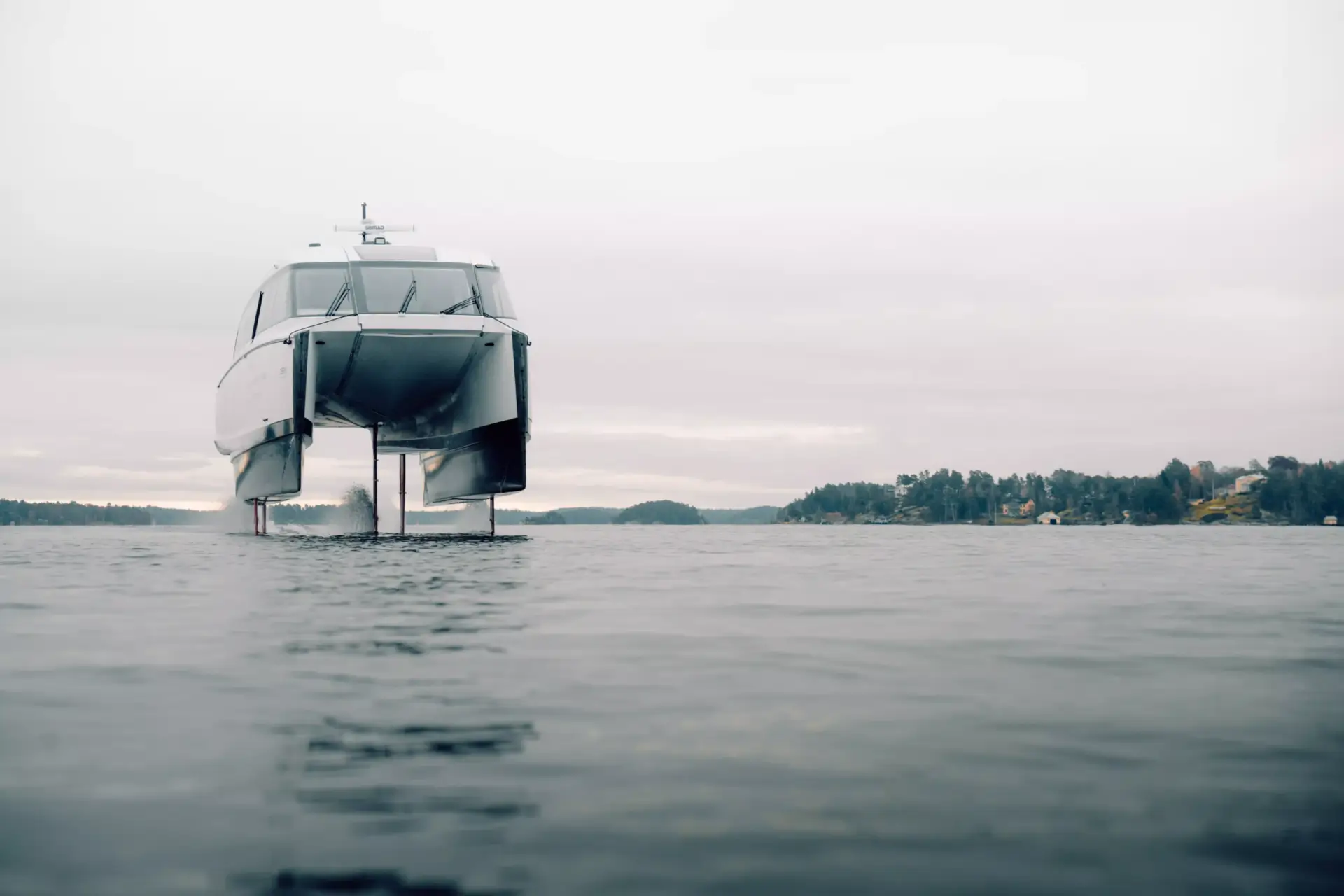
Navigating Shallow and Deep Waters
Hydrofoil vessels have unique capabilities for navigating various water conditions:
Shallow Water Navigation:
Modern hydrofoil boats can navigate shallow waters effectively by raising their foils, reducing the risk of running aground. Foils can be retracted to prevent damage in these conditions, allowing safe operation without the need for deep water.
Deep Water Efficiency:
In deep water conditions, modern hydrofoil boats extend their foils fully. This seamless transition between shallow and deep waters enables modern hydrofoil boats to access harbours and an ease of maintenance without limitations faced by their older counterparts with fixed foils.
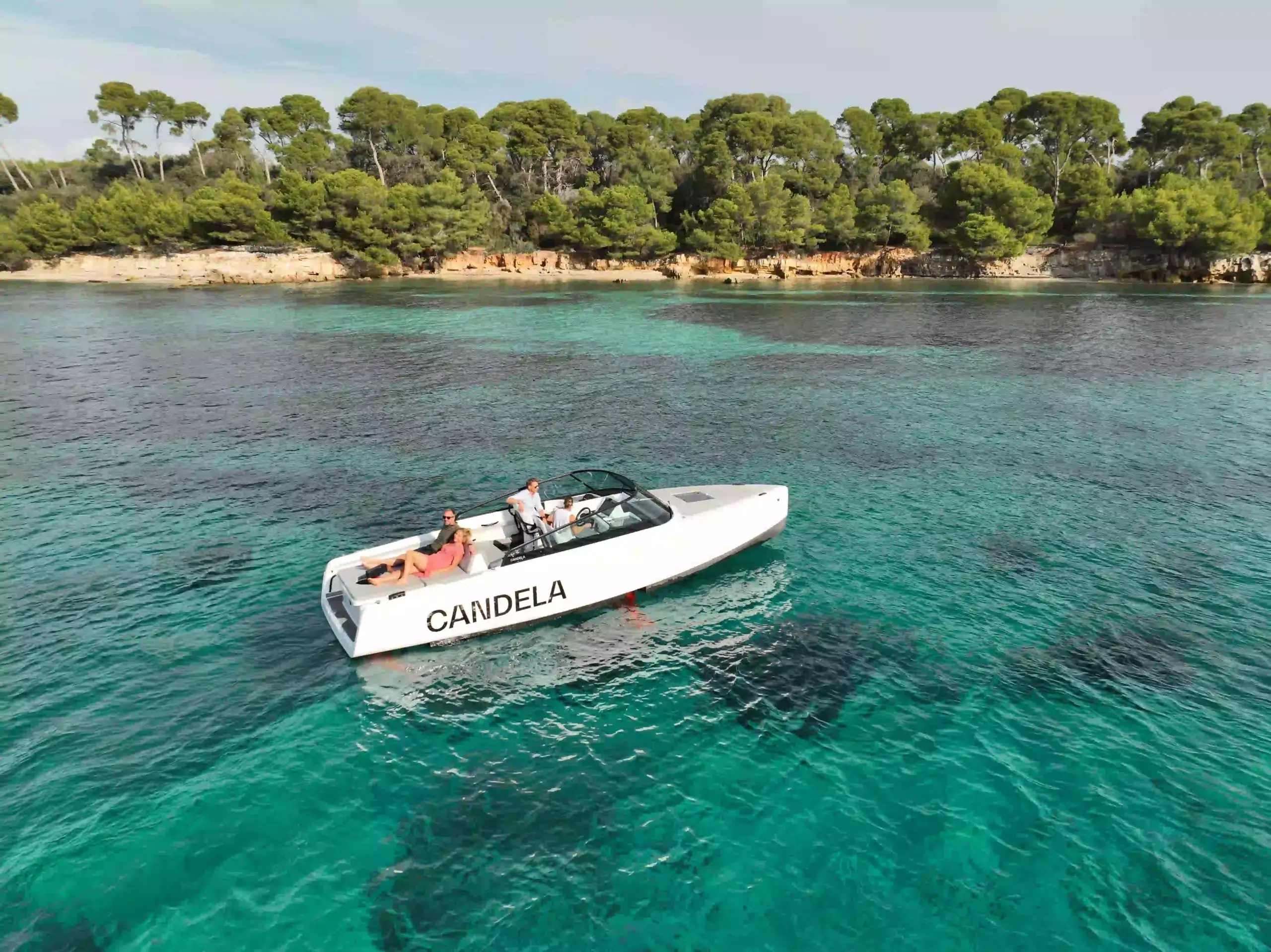
The Future of Boating: Hydrofoil Craft Advancements
The future of boating looks promising with advancements in hydrofoil technology. The maritime industry envisions hydrofoil technology becoming standard across vessels, including ferries, due to energy savings and speed enhancements.
The hydrofoil market’s growth will increase availability and affordability for recreational and commercial users. Electric hydrofoil technology, spearheaded by companies like Candela, is emerging as a key trend in the boating industry. By harnessing electric power, hydrofoil boats can achieve high speeds while producing zero emissions. This minimizies their carbon footprint and reduces environmental impact. Electric propulsion systems also offer quieter operation compared to conventional engine boats, minimizing disturbance to marine life.
Weighing the High Cost Against Benefits
When investing in a hydrofoil boat, one requires considering the cost. Hydrofoil ticket prices are usually higher than traditional ferry services due to fuel consumption, especially with turbine-powered foilers like the Boeing 929 Jetfoiler. However, passengers find the premium price justified for faster travel times and superior comfort compared to standard ferries. With efficient, electric-powered foiling ferries such as Candela P-12, operational costs would actually be much reduced instead of increased.
Initial Investment and Long-Term Savings
Hydrofoil boats demand an initial investment, often incorporating carbon front foils, hulls, and decks. However, they provide long-term operational cost savings through energy efficiency and reduced maintenance. For instance, the purchase price of Candela C-8 electric hydrofoil boat, starts at €330,000 excluding optional features. With operating costs 95% lower than fossil fuel boats, buyers save thousands on fuel, offering long-term savings potential.
Design and Aesthetics: The Art of Hydrofoil Craft
Foiling boats exhibit both impressive functionality and sustainability. Their designs range from Soviet Raketas’ 1950s spaceship aesthetics to sleek, modern styles reflecting advanced technology. These designs often resemble racing cars or jet fighters, emphasizing a futuristic look aligned with speed and efficiency.
Many modern hydrofoils use carbon fiber to achieve light weight and a rigid structure.
The market for recreational and commercial passenger hydrofoil vessels is still young, with many companies beginning to offer these products. Also many of them are electric as the increased efficiency now allows for great performance off a reasonably sized battery. For the first time, hydrofoils are challenging conventional hull designs.
Hydrofoil boats aren’t available in every category. However, for higher-end powerboats, they offer comparable performance to conventional planing speedboats but with significantly lower operational costs, approximately 95% lower due to their efficiency.

Frequently Asked Questions
How do hydrofoil boats achieve high speeds?
They achieve high speeds by generating lift with underwater wings or hydrofoils. This lifts the hull above the water’s surface and reduces drag which allows the boat to reach higher speeds.
What makes hydrofoil boats more fuel-efficient?
Foil boats are more fuel-efficient due to the reduction in drag from the hydrofoils. This leads to faster speeds and up to 80% reduction in the consumption of fuel/energy.
How do hydrofoil boats provide a smoother ride?
They do so by elevating the hull above the waterline, reducing waves and turbulence for improved passenger comfort. This also creates minimal wake, leading to a smooth ride with reduced disturbance to the marine environment.
Are hydrofoil boats versatile?
Yes, they are versatile and can be used in various applications, from ferry services to fishing, navigating both shallow and deep waters seamlessly.
Are hydrofoil boats expensive?
Since foiling boats are often constructed from carbon fiber and feature advanced foil control systems, they fall into the premium category of boating. However, once purchased, they offer long-term cost savings through fuel efficiency and reduced maintenance. For example, the purchase price of Candela C-8 starts at €330,000, excluding optional features. But it costs around 10 euros for a full battery, providing 50+ nautical miles. A conventional planing boat with two outboards would cost 200 euros to run the same distance – or 20 times more expensive to run.
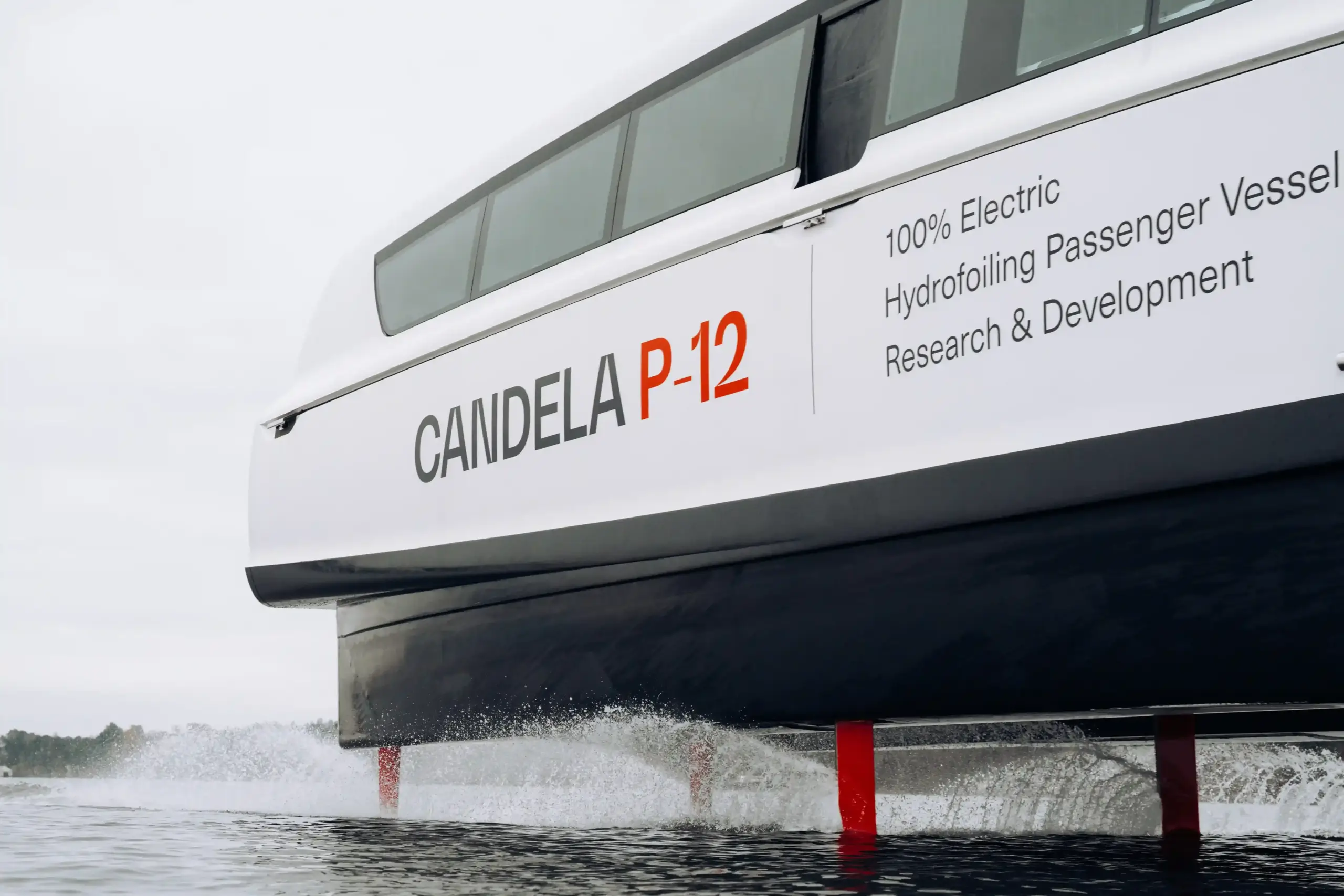
Join our newsletter to get sneak peaks, early access and more.
BMW just revealed an electric hydrofoil boat at the Cannes Film Festival
It can go about 62 miles and travel at speeds up to 30 knots.
Were you expecting to see an electric BMW hydrofoil boat today? Neither were we, but here it is. Named “The Icon,” this boat is a collaboration between BMW and boat maker TYDE, and it was just revealed at the Cannes Film Festival.
Electric boats may not have caught on in the way electric cars have, but this concept boat was built in an effort to change minds. Calling it a concept may not be giving it enough credit, too, as BMW is calling it a “production-ready vehicle” for both private and commercial use.
As for what’s making it go, BMW says it supplied six battery packs for energy , totaling 240 kWh. This energy is put to use via two 134-horsepower electric motors that BMW says will allow the boat to hit a maximum speed of 30 knots — that’s about 34.5 mph. Range is impressive, as BMW says The Icon can travel approximately 62 miles on a full charge.
Contributing to this range figure is the fact that the boat is a hydrofoil design, which BMW says reduces the energy required to clip through the water by up to 80% versus a conventional boat design. You’ll notice in the photos that the boat is riding on wing-like structures below the water level, which lifts the hull above the surface. A byproduct of this is a more comfortable ride, but since The Icon is electric, it also produces minimal noise and doesn’t suffer from powertrain-related vibrations.

The only noise you’ll hear is a soundtrack composed by none other than Hans Zimmer , the famous composer who has created the soundtracks of many new BMW electric cars . An onboard Dolby Atmos sound system ensures that the sound experience on the boat is fitting with BMW's luxury cred.
Another BMW touch with this vessel is at its command center. The 32-inch touchscreen runs BMW iDrive 8 , and the controls are meant to mimic those you might find in a BMW car. You can even give it voice commands as you can in iDrive 8. LED lights at the bow, stern and charging ports remind us of the ambient lighting inside BMWs, but the seats are all their own, as they rotate 360 degrees and form a living room of sorts inside the vessel. The boat is 43.14 feet in total length and measures 14.7 feet wide at its widest rear section, so there’s plenty of space for a small party onboard.
BMW doesn’t say it will collaborate on building electric boats down the road, but it sure is neat to see the roundel and BMW technology hit the water in electric form.
Related video:
BMW Information
- All BMW Models
- Rebates & Incentives
- News & Reviews
- Photos & Videos
- More BMW Information
Featured Gallery BMW electric boat - The Icon

- Weird Car News
- License License
- Facebook Share
- Twitter Share
- Tumblr Share
- Twitch Share
- Flipboard Share
- Instagram Share
- Newsletter Share
- Youtube Share
- Feeds Share

Popular Vehicles
Popular new vehicles.
- 2023 Ford Bronco
- 2024 Lexus GX 550
- 2023 Toyota Camry
- 2024 Toyota RAV4
- 2024 Ford Bronco
- 2024 Toyota Tacoma
- 2023 Toyota Tacoma
- 2023 Ford F-150
- 2023 Jeep Wrangler
- 2024 Toyota Camry
Popular Used Vehicles
- 2022 Ford F-150
- 2021 Jeep Grand Cherokee
- 2022 Honda Accord
- 2022 Toyota 4Runner
- 2014 Chevrolet Silverado 1500
- 2014 Honda Accord
- 2014 Honda Civic
- 2020 Honda Civic
- 2021 Toyota 4Runner
- 2017 Chevrolet Camaro
Popular Electric Vehicles
- 2023 Tesla Model 3
- 2017 Tesla Model S
- 2016 Tesla Model S
- 2024 Rivian R1T
- 2024 Tesla Model 3
- 2024 GMC HUMMER EV Pickup
- 2022 Tesla Model 3
- 2023 GMC HUMMER EV Pickup
- 2023 Rivian R1T
- 2023 Lucid Air
Popular Truck Vehicles
- 2024 Ford F-150
- 2024 Chevrolet Silverado 1500
- 2023 Toyota Tundra
- 2024 Chevrolet Silverado 2500HD
- 2024 Chevrolet Colorado
Popular Crossover Vehicles
- 2023 Ford Bronco Sport
- 2024 Chevrolet Trax
- 2024 Honda CR-V
- 2023 Toyota RAV4
- 2024 Subaru Outback
- 2024 Hyundai Santa Fe
- 2024 Honda Pilot
- 2022 Toyota RAV4
Popular Luxury Vehicles
- 2024 Mercedes-Benz GLC 300
- 2024 Porsche 911
- 2022 Lexus IS 350
- 2019 Chevrolet Corvette
- 2024 Lexus RX 350
- 2024 Land Rover Defender
- 2014 Mercedes-Benz C-Class
- 2023 Porsche 911
- 2015 Mercedes-Benz C-Class
Popular Hybrid Vehicles
- 2023 Ford Explorer
- 2024 Toyota Sienna
- 2024 Ford Explorer
- 2022 Ford Explorer
- 2023 Toyota Sienna
- 2024 Toyota Tundra Hybrid
- 2024 Toyota Venza
Popular Makes
Featured makes, product guides.
- The Best Electric Bikes
- The Best Car Covers
- The Best Portable Air Compressors
- The Best Car GPS Trackers
Choose a Display Name
Please enter a display name

Sign in to post
Please sign in to leave a comment.
Time in Elektrostal , Moscow Oblast, Russia now
- Tokyo 08:51PM
- Beijing 07:51PM
- Kyiv 02:51PM
- Paris 01:51PM
- London 12:51PM
- New York 07:51AM
- Los Angeles 04:51AM
Time zone info for Elektrostal
- The time in Elektrostal is 8 hours ahead of the time in New York when New York is on standard time, and 7 hours ahead of the time in New York when New York is on daylight saving time.
- Elektrostal does not change between summer time and winter time.
- The IANA time zone identifier for Elektrostal is Europe/Moscow.
Time difference from Elektrostal
Sunrise, sunset, day length and solar time for elektrostal.
- Sunrise: 04:06AM
- Sunset: 08:40PM
- Day length: 16h 34m
- Solar noon: 12:23PM
- The current local time in Elektrostal is 23 minutes ahead of apparent solar time.
Elektrostal on the map
- Location: Moscow Oblast, Russia
- Latitude: 55.79. Longitude: 38.46
- Population: 144,000
Best restaurants in Elektrostal
- #1 Tolsty medved - Steakhouses food
- #2 Ermitazh - European and japanese food
- #3 Pechka - European and french food
Find best places to eat in Elektrostal
- Best pubs & bars in Elektrostal
- Best steak restaurants in Elektrostal
- Best bbqs in Elektrostal
The 50 largest cities in Russia

Current time by city
For example, New York
Current time by country
For example, Japan
Time difference
For example, London
For example, Dubai
Coordinates
For example, Hong Kong
For example, Delhi
For example, Sydney
Geographic coordinates of Elektrostal, Moscow Oblast, Russia
City coordinates
Coordinates of Elektrostal in decimal degrees
Coordinates of elektrostal in degrees and decimal minutes, utm coordinates of elektrostal, geographic coordinate systems.
WGS 84 coordinate reference system is the latest revision of the World Geodetic System, which is used in mapping and navigation, including GPS satellite navigation system (the Global Positioning System).
Geographic coordinates (latitude and longitude) define a position on the Earth’s surface. Coordinates are angular units. The canonical form of latitude and longitude representation uses degrees (°), minutes (′), and seconds (″). GPS systems widely use coordinates in degrees and decimal minutes, or in decimal degrees.
Latitude varies from −90° to 90°. The latitude of the Equator is 0°; the latitude of the South Pole is −90°; the latitude of the North Pole is 90°. Positive latitude values correspond to the geographic locations north of the Equator (abbrev. N). Negative latitude values correspond to the geographic locations south of the Equator (abbrev. S).
Longitude is counted from the prime meridian ( IERS Reference Meridian for WGS 84) and varies from −180° to 180°. Positive longitude values correspond to the geographic locations east of the prime meridian (abbrev. E). Negative longitude values correspond to the geographic locations west of the prime meridian (abbrev. W).
UTM or Universal Transverse Mercator coordinate system divides the Earth’s surface into 60 longitudinal zones. The coordinates of a location within each zone are defined as a planar coordinate pair related to the intersection of the equator and the zone’s central meridian, and measured in meters.
Elevation above sea level is a measure of a geographic location’s height. We are using the global digital elevation model GTOPO30 .
Elektrostal , Moscow Oblast, Russia

IMAGES
VIDEO
COMMENTS
A sailing hydrofoil, hydrofoil sailboat, or hydrosail is a sailboat with wing-like foils mounted under the hull. ... The G4 is a junior racer with cruiser content and comfort made by DNA Performance Sailing. The boat design was based on an A-Class Catamaran, containing 'L' foils on each hull and 'T' foils for the rudders and is claimed to reach ...
A hydrofoil yacht is a sailboat equipped with wing-like foils that lift the hull out of the water as it gains speed. This lifting action reduces the wetted area of the hull, minimizing drag and allowing the yacht to achieve higher speeds. Hydrofoil yachts can be retrofitted on both monohull and multihull sailboats, with different types of foils ...
In 1906, his 1-ton 60 hp foiler reached 42.5 mph. Alexander Graham Bell's HD-4 Hydrodrome flew on Bras d' Or Lake at 70 mph in 1919. And several sailing foiler patents began appearing in the 1950s. Notably, JG Baker's 26-foot monohull, Monitor, flew at 30-plus mph in 1955. Baker experimented with a number of foil configurations, and at ...
The design of a hydrofoil consists of several components, including the foil head, foil mast, fuselage, front wing, and stabilizer. These components work together to provide lift, stability, and maneuverability on the water. The type of hydrofoil design you choose will depend on your skill level, riding style, and personal preferences.
F50s are 15-metre-long, 8.8-metre-wide hydrofoil catamarans propelled by rigid sails and capable of such astounding speeds that Sail GP has been called the "Formula One of sailing". How are ...
DESIGN PARAMETER: Hydrofoil (It is a foil or wing under water used to lift the boat s hull until it is totally outside the water.) 1. At low speeds the hull (body of ship) sits in the water and the hydrofoils are totally submerged in the water. 2. As the boat s speed increases, the hydrofoils create lift.
Hydrofoil sailboats blend speed, stability, and innovation for a fun sailing experience. Their design lifts the hull above water, reducing drag and enabling high-speed travel. Advanced control mechanisms maintain stability in varying wind conditions. Sails and hulls are meticulously engineered for optimal aerodynamics and lift.
Hydrofoil catamarans can reach speeds of up to 40 knots (46 mph) or more, depending on the design and conditions. The foils on a hydrofoil catamaran can lift the hulls out of the water, reducing drag and allowing for a smoother and faster ride. Hydrofoil catamarans are used for various purposes, including racing, recreational sailing, and even ...
The Hydrofoil Handbook is subdivided into two volumes. This first volume presents the more general aspects of design and development of hydrofoil craft,as distinct from the more specific hydrodynamic information in the second volume.All that can be said at this time regarding configuration and general design of hydrofoil systems is
One of the world's first sailing hydrofoils, Monitor was created in 1955 by Gordon Baker,… North Atlantic in six days solo: Arkea Ultim Challenge leaders cross the Equator January 13, 2024
Estimates based on the hydrofoil boat design and manufactured components predict a takeoff velocity of 5 knots, with foils at a 6° angle of attack, a ... In his book Hydrofoils Design Build Fly, Ray Vellinga describes the governing forces surrounding the use of hydrofoils [7]. To start, the formula for lift is seen in Equation
A hydrofoil is a lifting surface, or foil, that operates in water.They are similar in appearance and purpose to aerofoils used by aeroplanes. Boats that use hydrofoil technology are also simply termed hydrofoils. As a hydrofoil craft gains speed, the hydrofoils lift the boat's hull out of the water, decreasing drag and allowing greater speeds.
Nearly two decades ago, a simple innovation unveiled at a small Perth boat club set in motion changes which would eventually make their way to the world's mo...
The Working Principle Of Hydrofoil Boats. A "hydrofoil" is a structure made of a wing (V), T, or U form that supports a hydrofoil boat. Surface-piercing and fully submerged hydrofoil boats are the two different varieties. The boat is raised off the water's surface at high speeds using both varieties of hydrofoils.
Gael Pawson sailing a foiling Moth at Alan Hillman's Moth sailing school in Mar Menor, Spain 3. International Moth Always one of the more radical development dinghy classes, the adoption of a foiling design (as opposed to the 'low-riders' - non-foiling Moths) completely transformed this class and gave it a huge boost in international popularity.
Hydrofoil Design and Construction 2 Abstract This TFG project reports the design and prototyping of a surf hydrofoil. The hydrodynamic design has been done with a NASA's open source software Open VSP together with a simulation platform on Simulink. Some geometries have been designed, 3D printed and tested in a scale bench pulled from a boat.
same principles to design hydrofoils for other events and competitions. Based on the weight of the craft and skipper, as well as the power budget (Table 1), the following design specifications were derived for the 6 m (18 ft) boat: The Endurance Event configuration hydrofoils must be able to lift the boat and driver, 2890 N
With razor-sharp hydrofoil catamarans that help them hit speeds of 60 miles an hour, the athletes of SailGP are pushing the limits of physics and human endur...
Jarrett Bay, builder of custom sportsfishing boats, is perhaps a surprising name to find on the hydrofoil roster. But as reported in Power & Motoryacht' s July 2018 issue, the builder's new 90-footer sports a foil—a 14-foot wing slung beneath the hull, to add lift and increase top speed to a barely believable 50 knots.
Hydrofoil boats demand an initial investment, often incorporating carbon front foils, hulls, and decks. However, they provide long-term operational cost savings through energy efficiency and reduced maintenance. For instance, the purchase price of Candela C-8 electric hydrofoil boat, starts at €330,000 excluding optional features.
Contributing to this range figure is the fact that the boat is a hydrofoil design, which BMW says reduces the energy required to clip through the water by up to 80% versus a conventional boat design.
In 1938, it was granted town status. [citation needed]Administrative and municipal status. Within the framework of administrative divisions, it is incorporated as Elektrostal City Under Oblast Jurisdiction—an administrative unit with the status equal to that of the districts. As a municipal division, Elektrostal City Under Oblast Jurisdiction is incorporated as Elektrostal Urban Okrug.
Contributing to this range figure is the fact that the boat is a hydrofoil design, which BMW says reduces the energy required to clip through the water by up to 80% versus a conventional boat design.
Sunrise, sunset, day length and solar time for Elektrostal. Sunrise: 04:25AM. Sunset: 08:21PM. Day length: 15h 56m. Solar noon: 12:23PM. The current local time in Elektrostal is 23 minutes ahead of apparent solar time.
Geographic coordinates of Elektrostal, Moscow Oblast, Russia in WGS 84 coordinate system which is a standard in cartography, geodesy, and navigation, including Global Positioning System (GPS). Latitude of Elektrostal, longitude of Elektrostal, elevation above sea level of Elektrostal.
Landscape architects near me will also design any structures or outbuildings that will be added to the space. Any grading changes that will be added to the yard are also the responsibility of the architect. This includes any drainage modifications. An engineer can also be responsible for these tasks, but licensed Moscow Oblast landscapers are ...